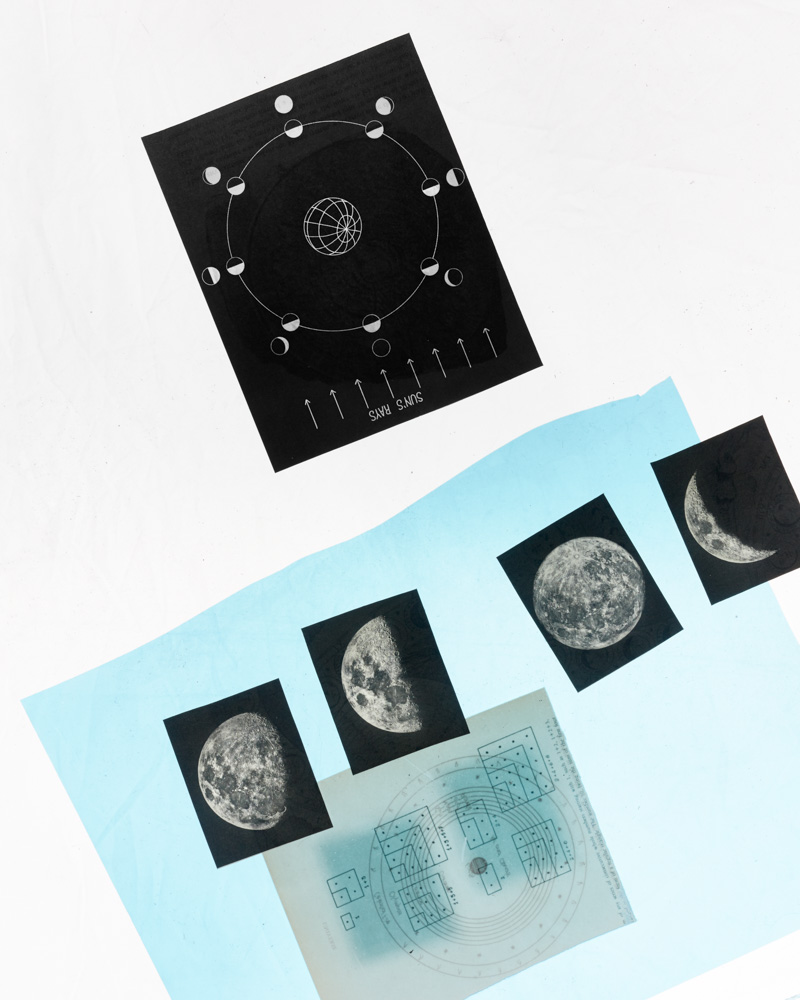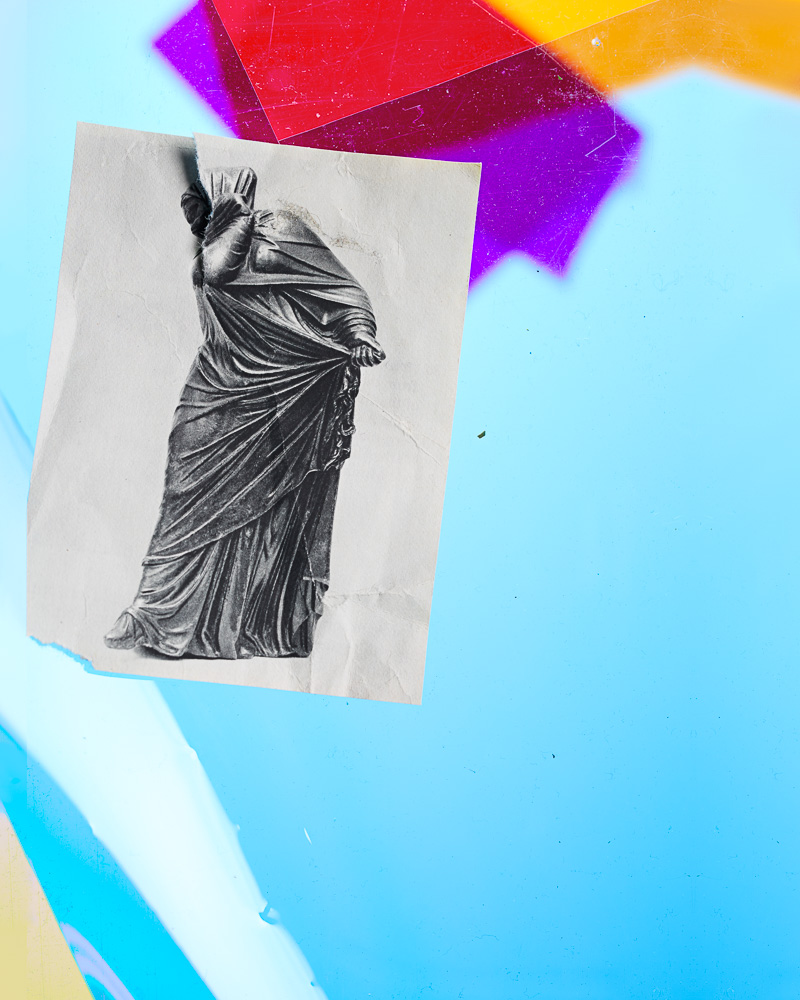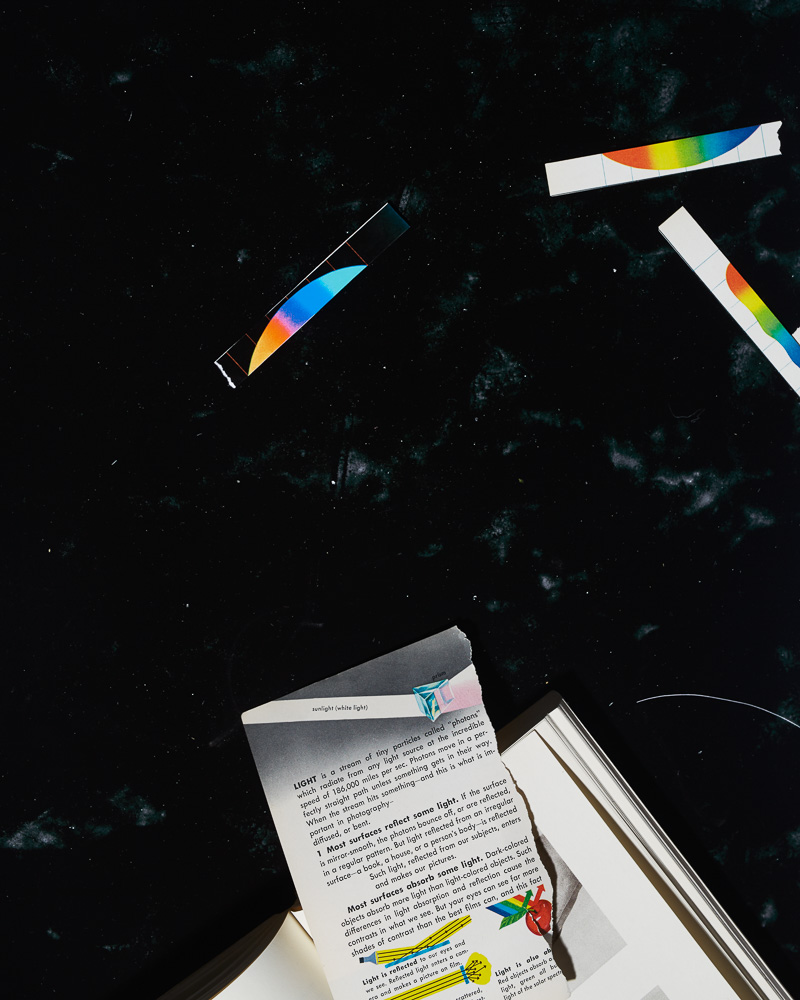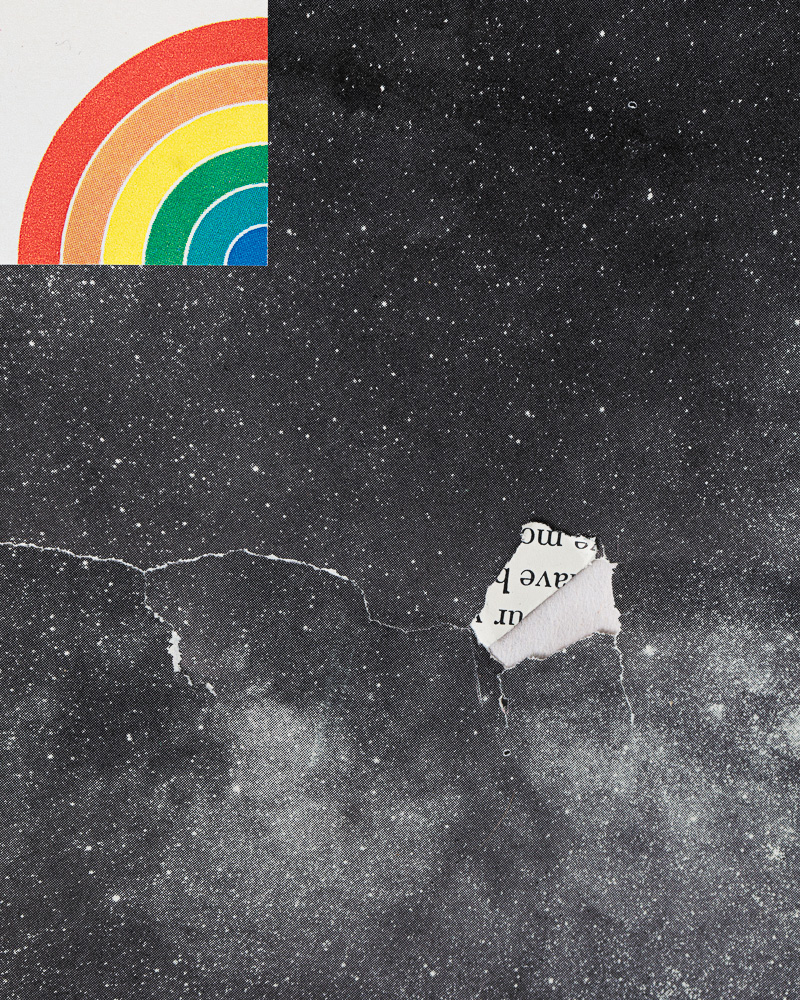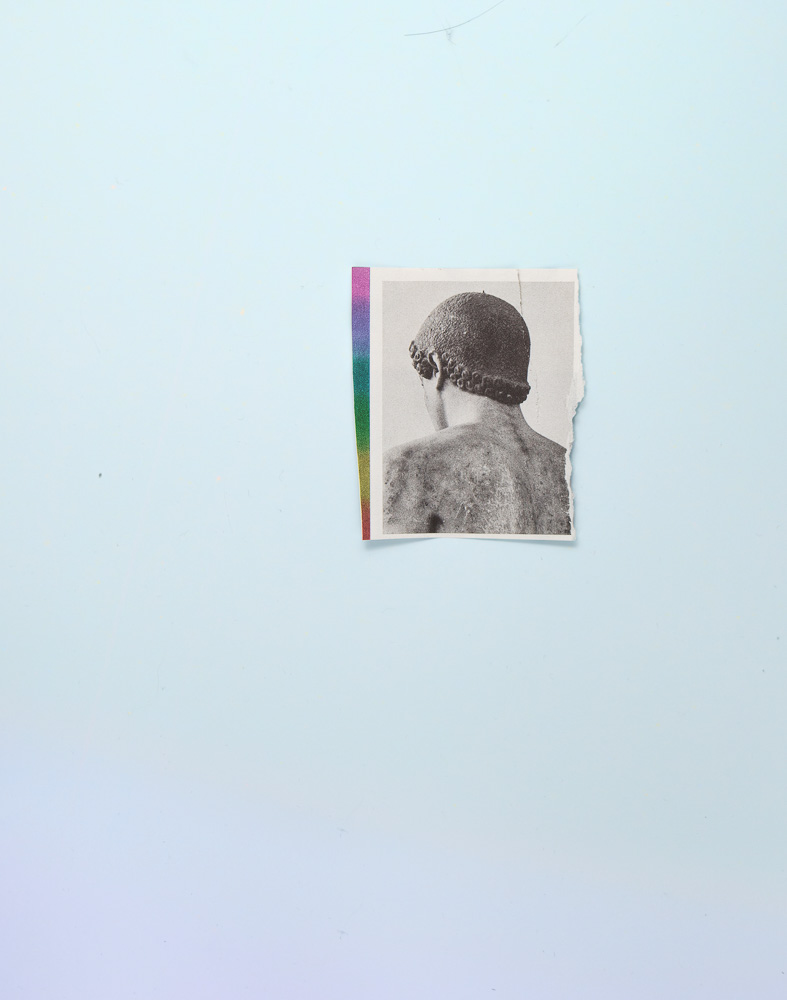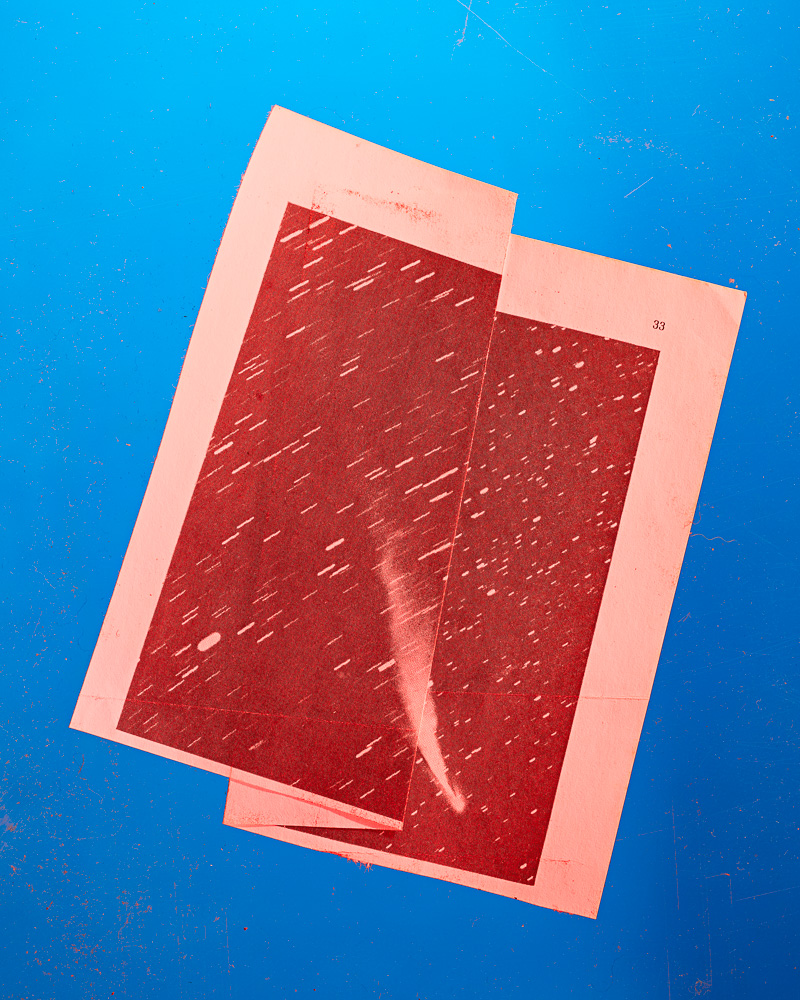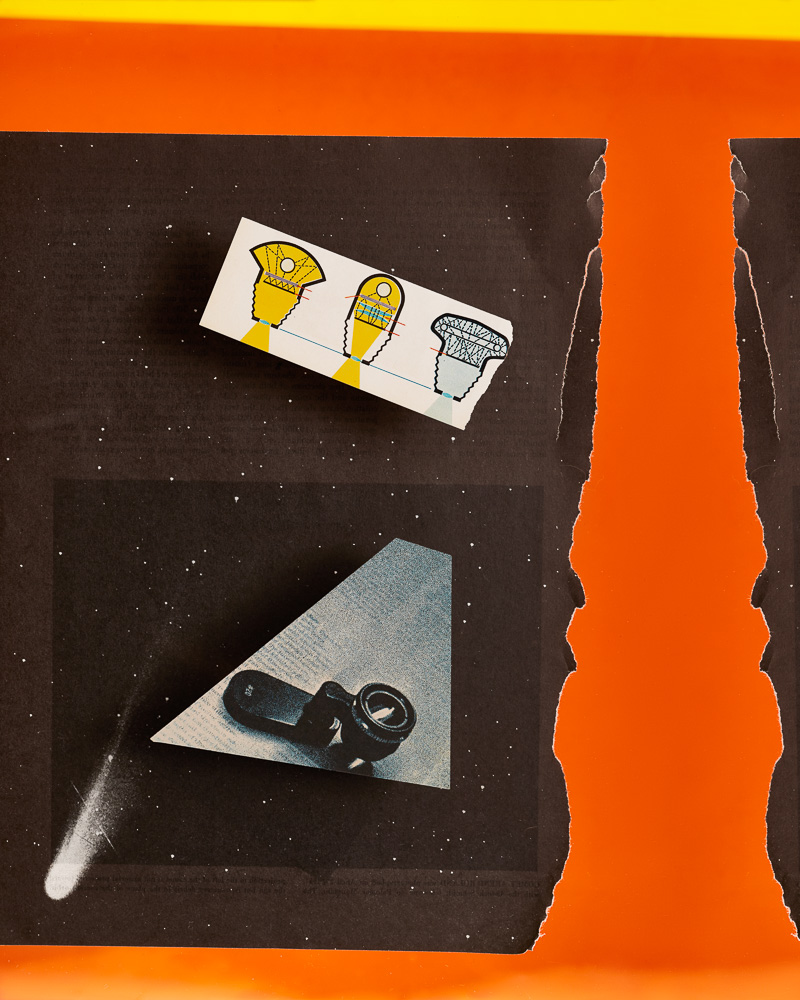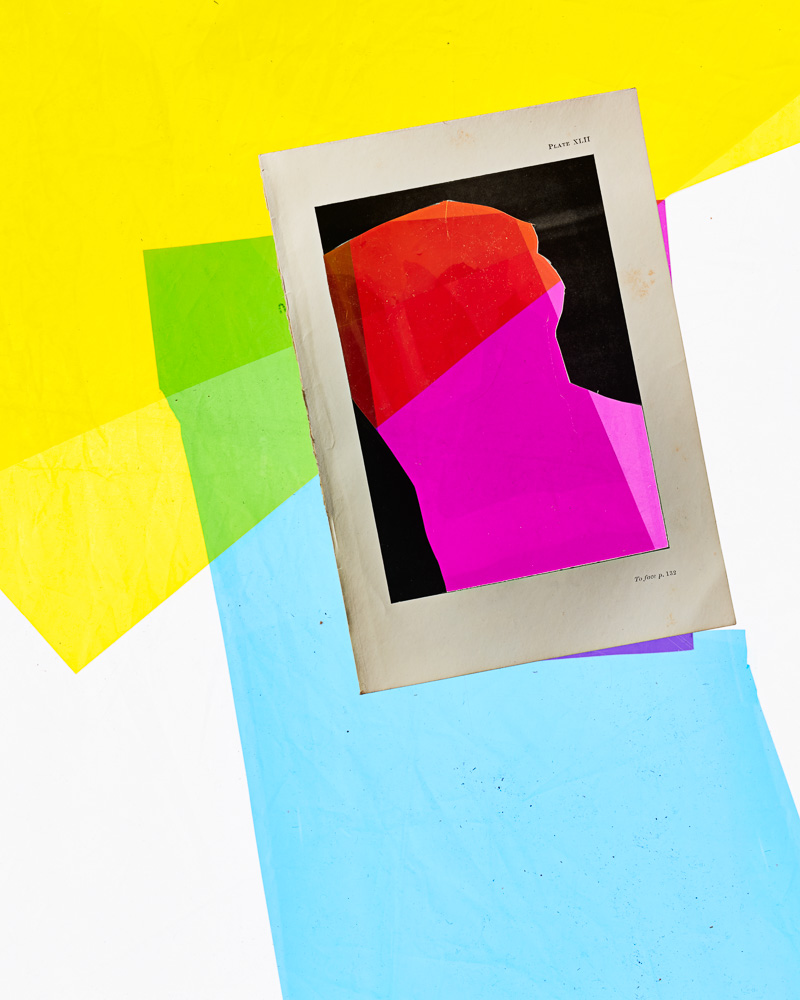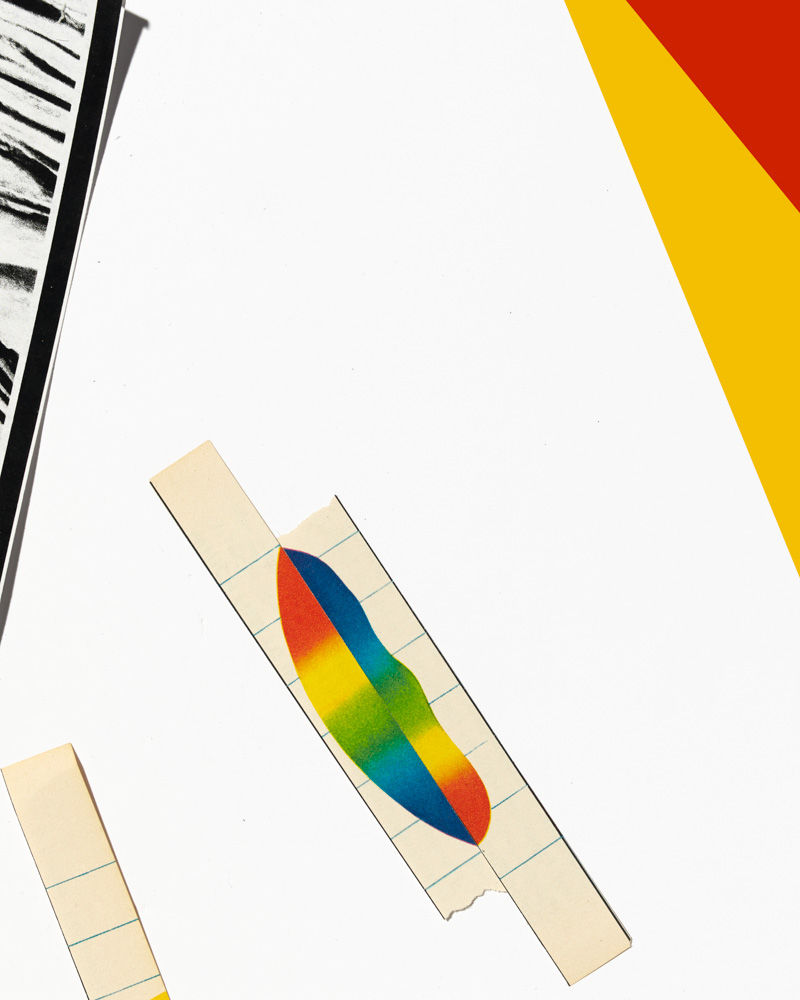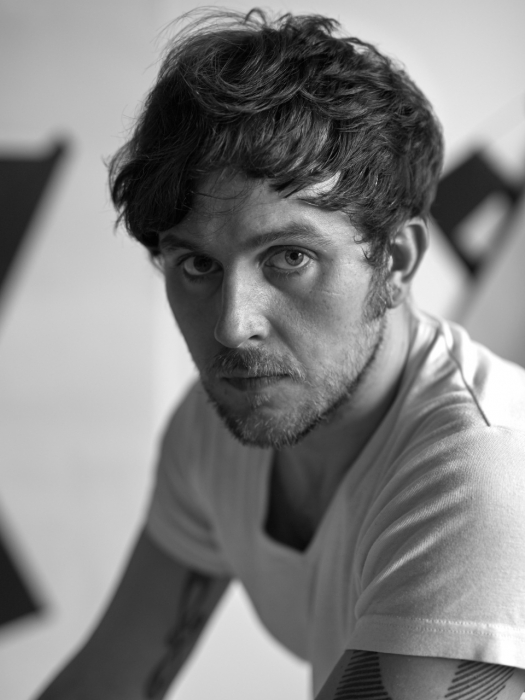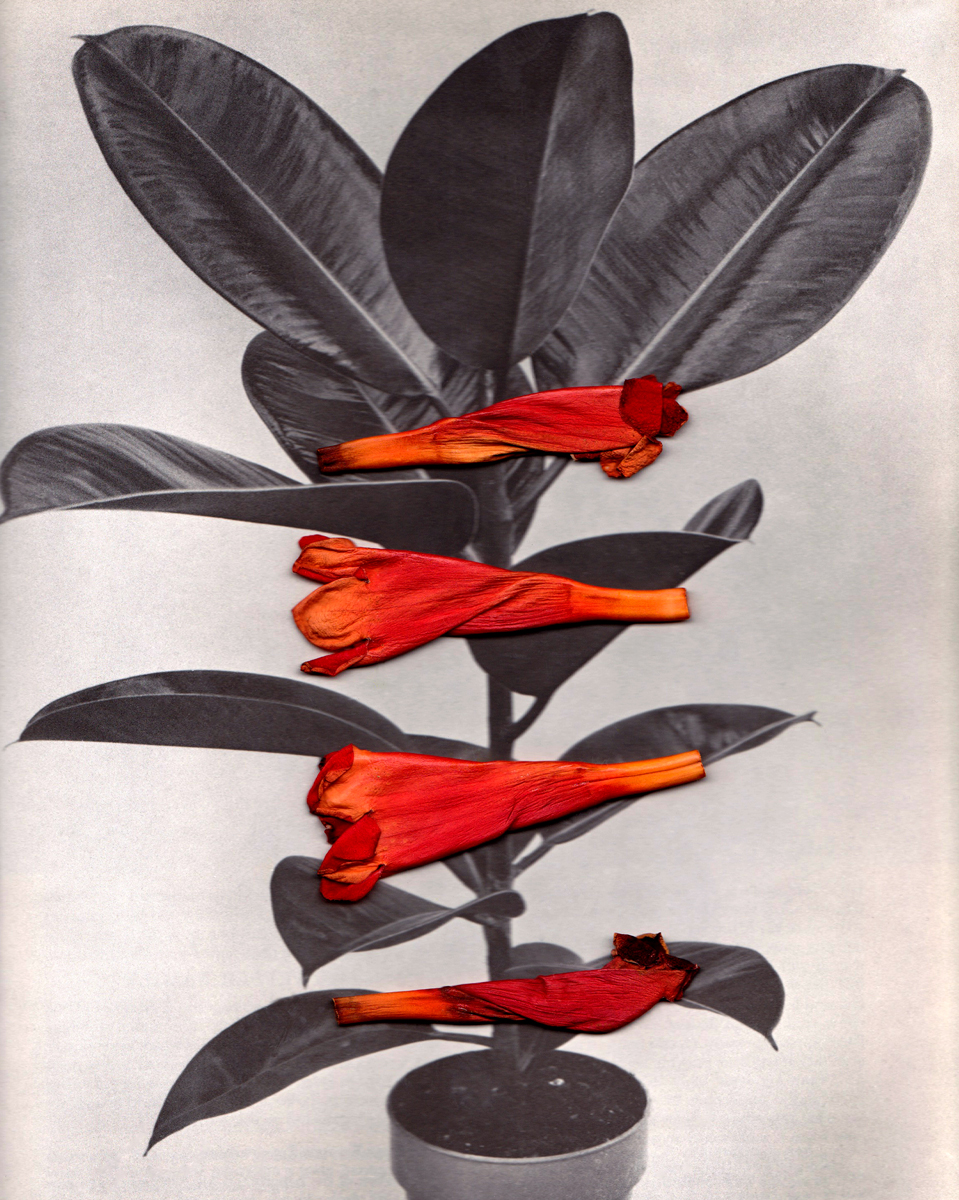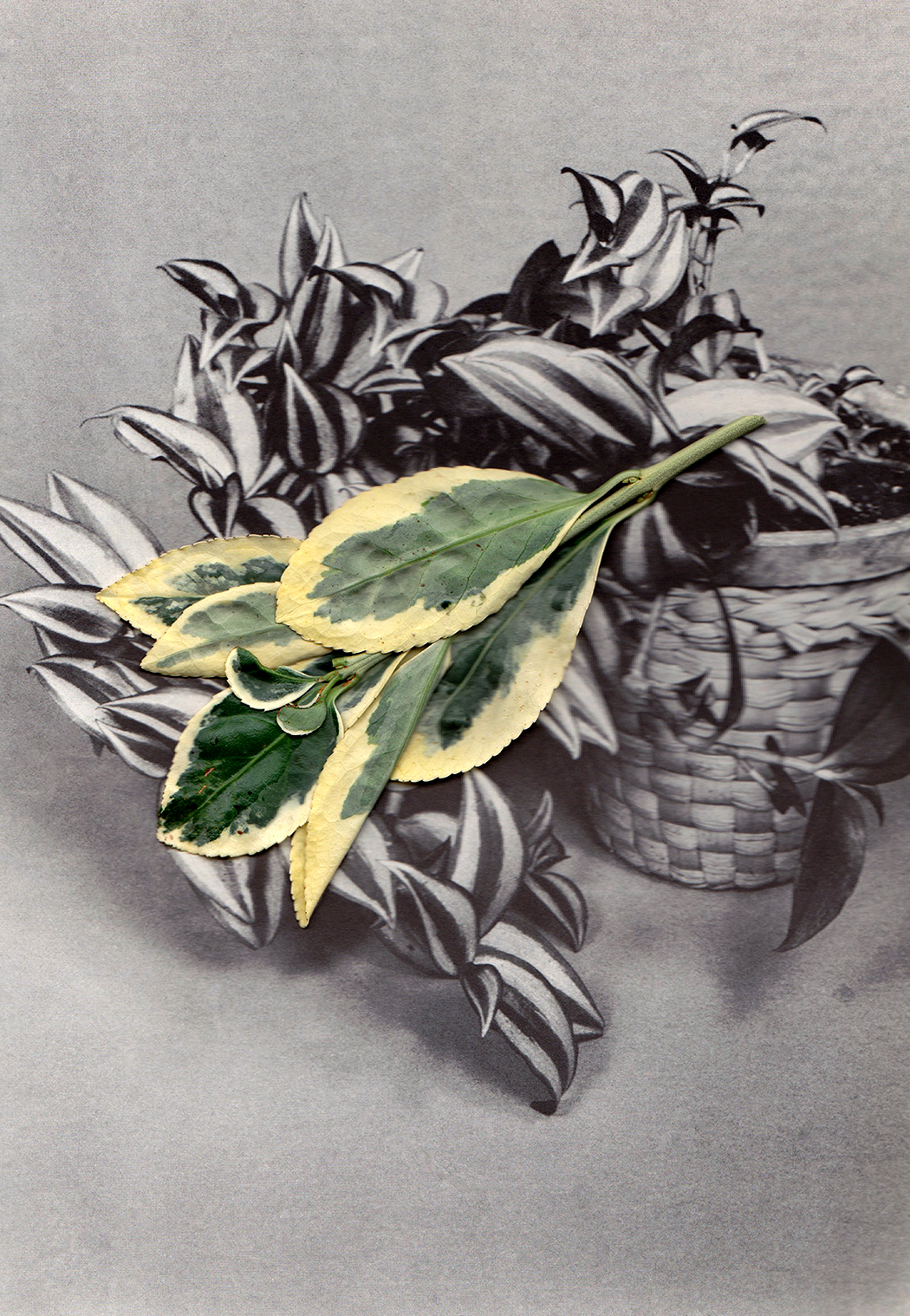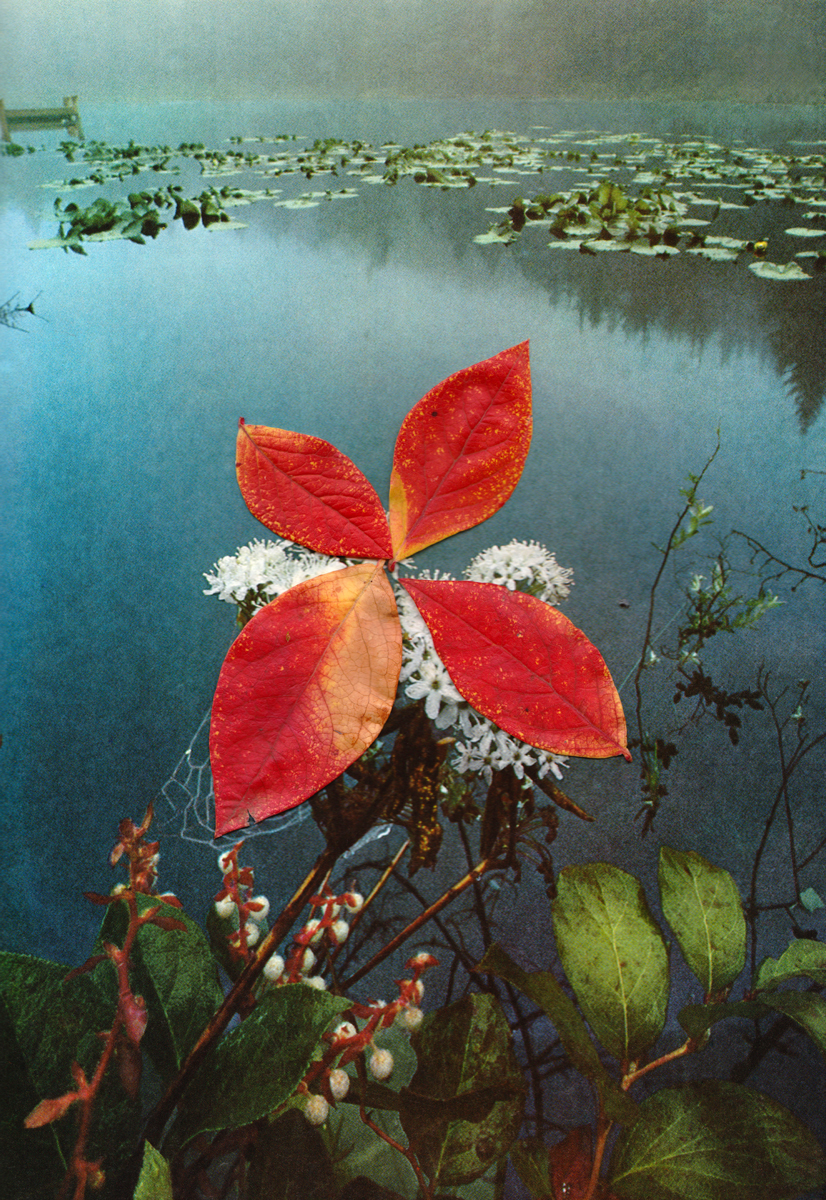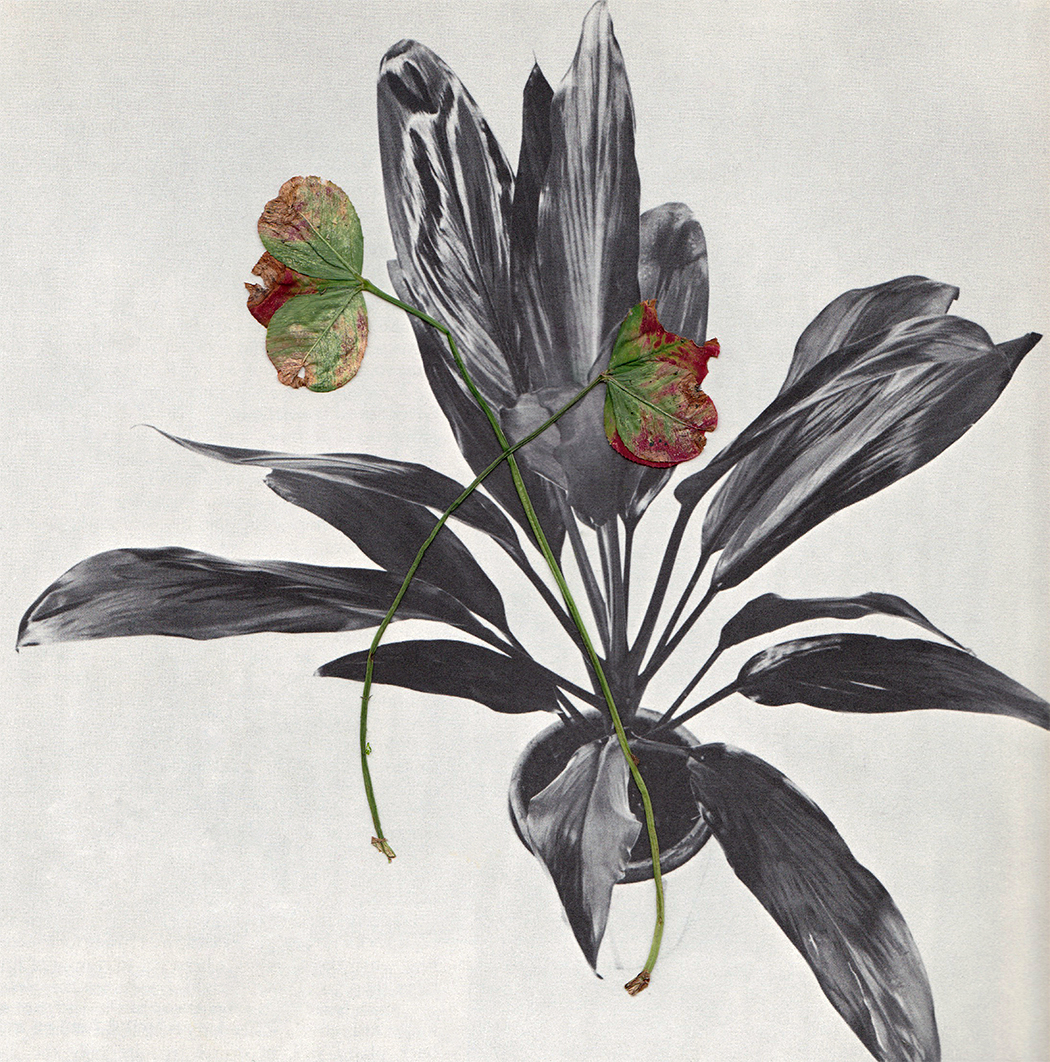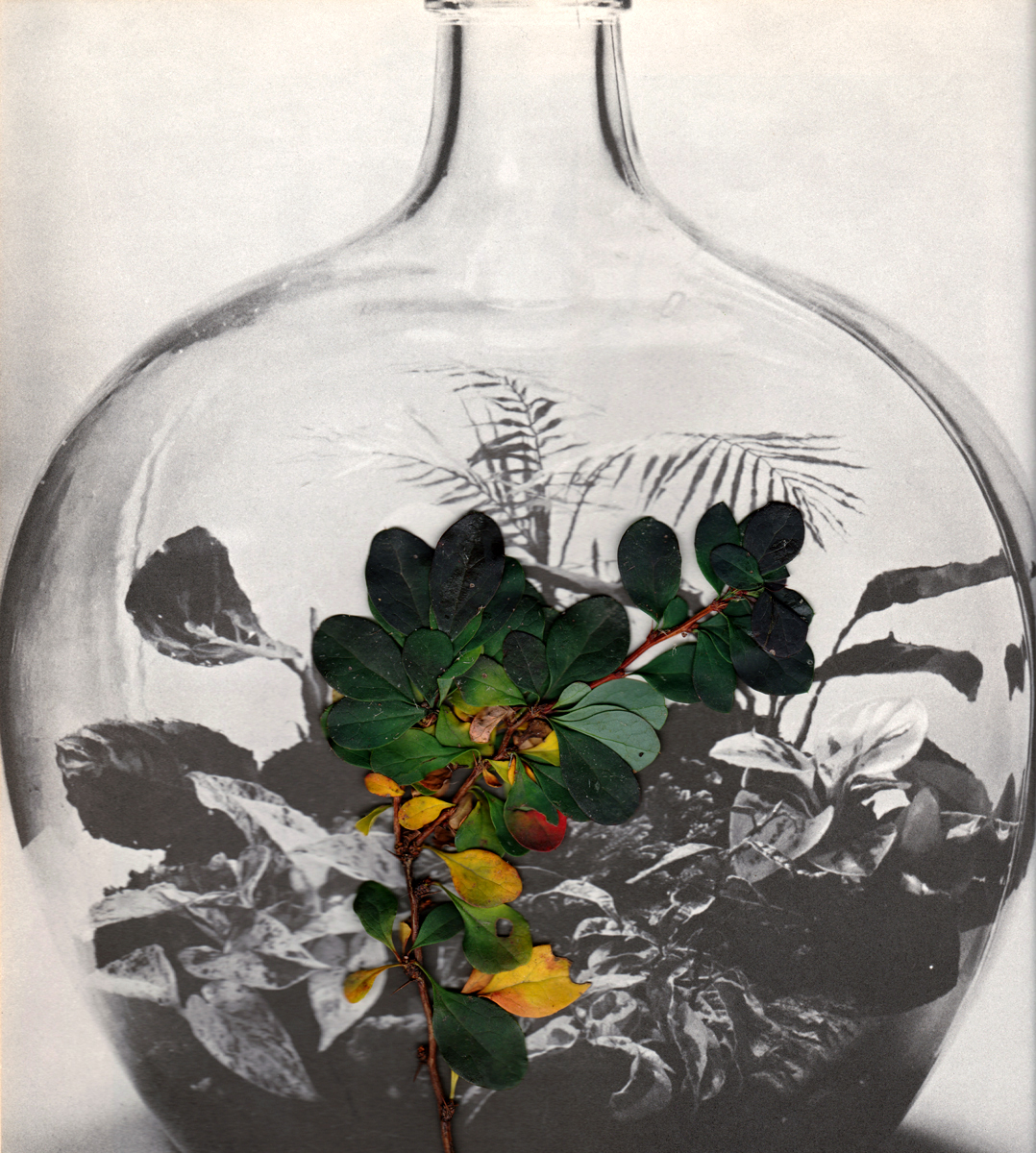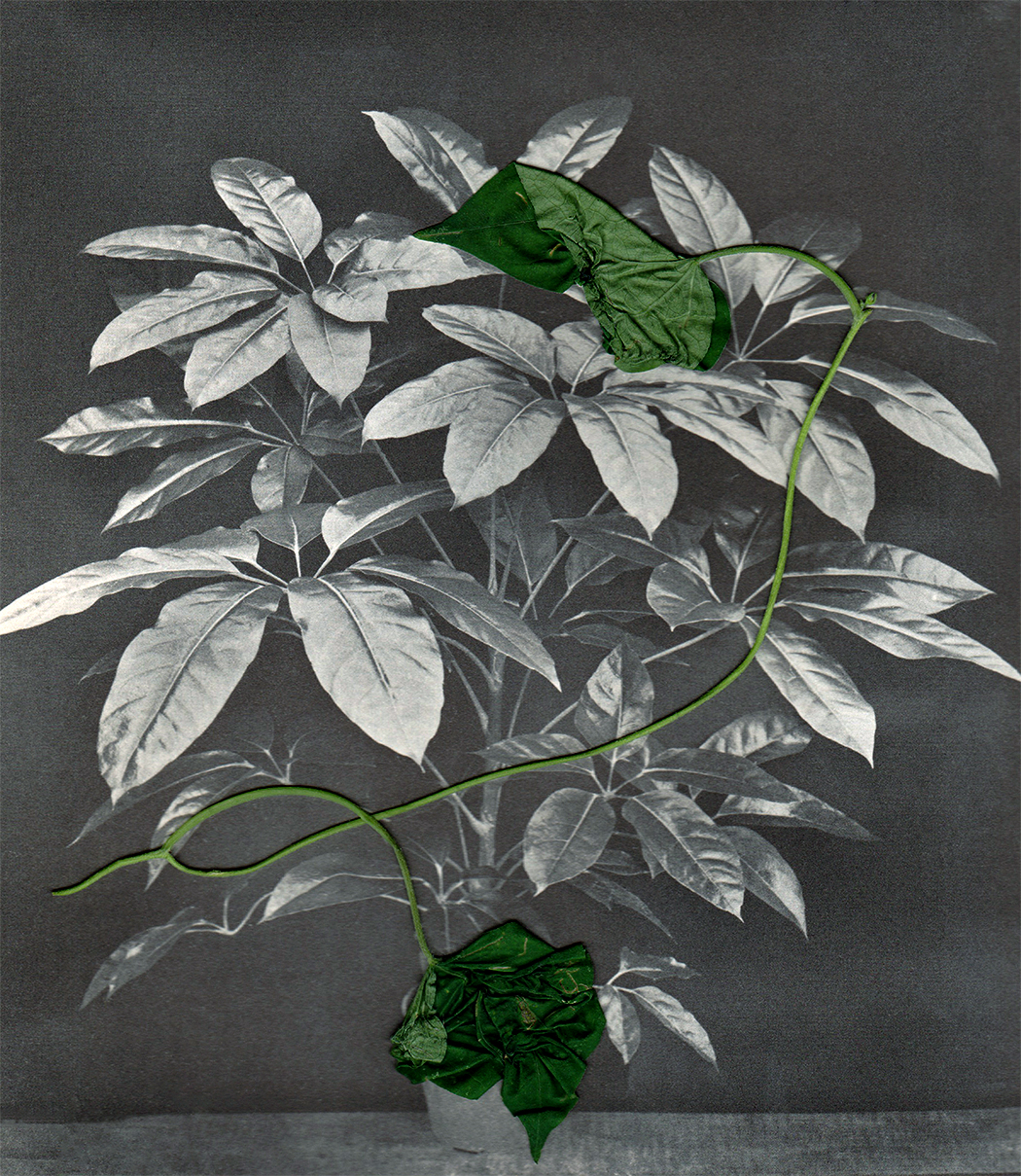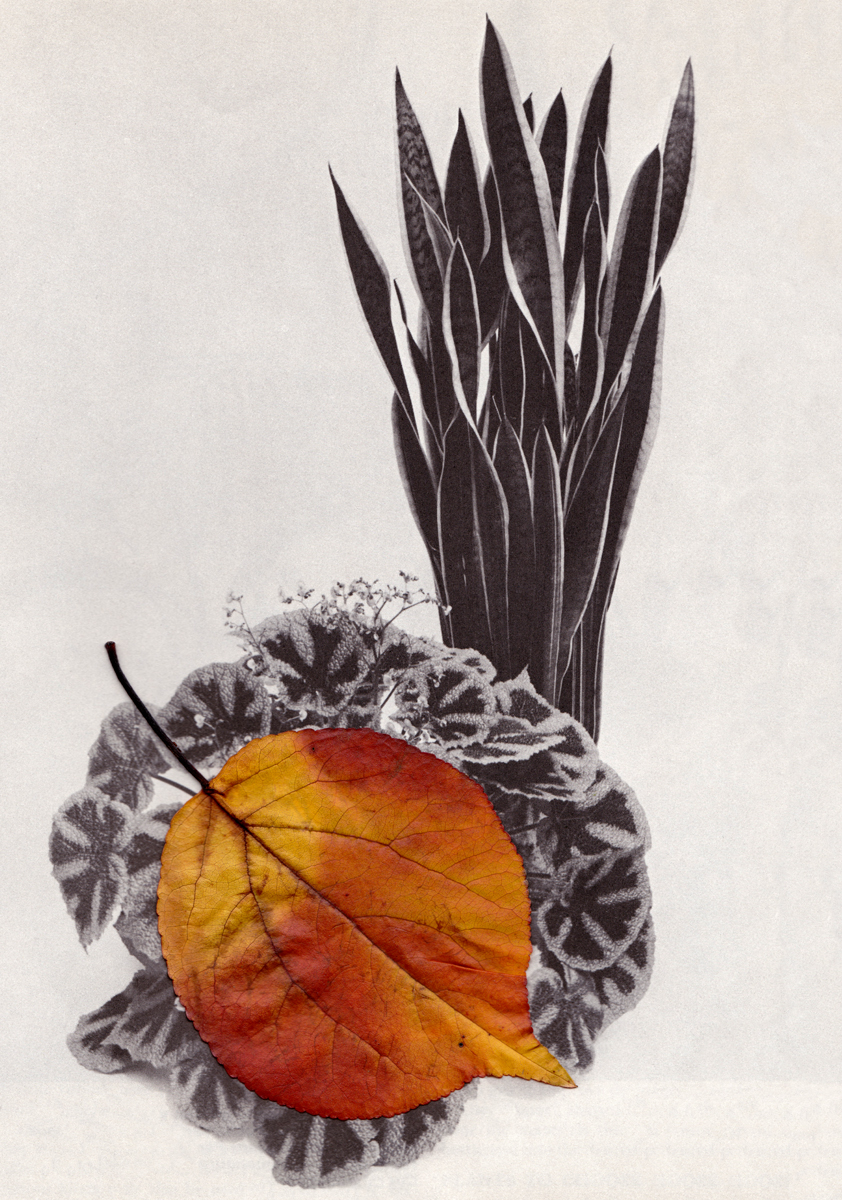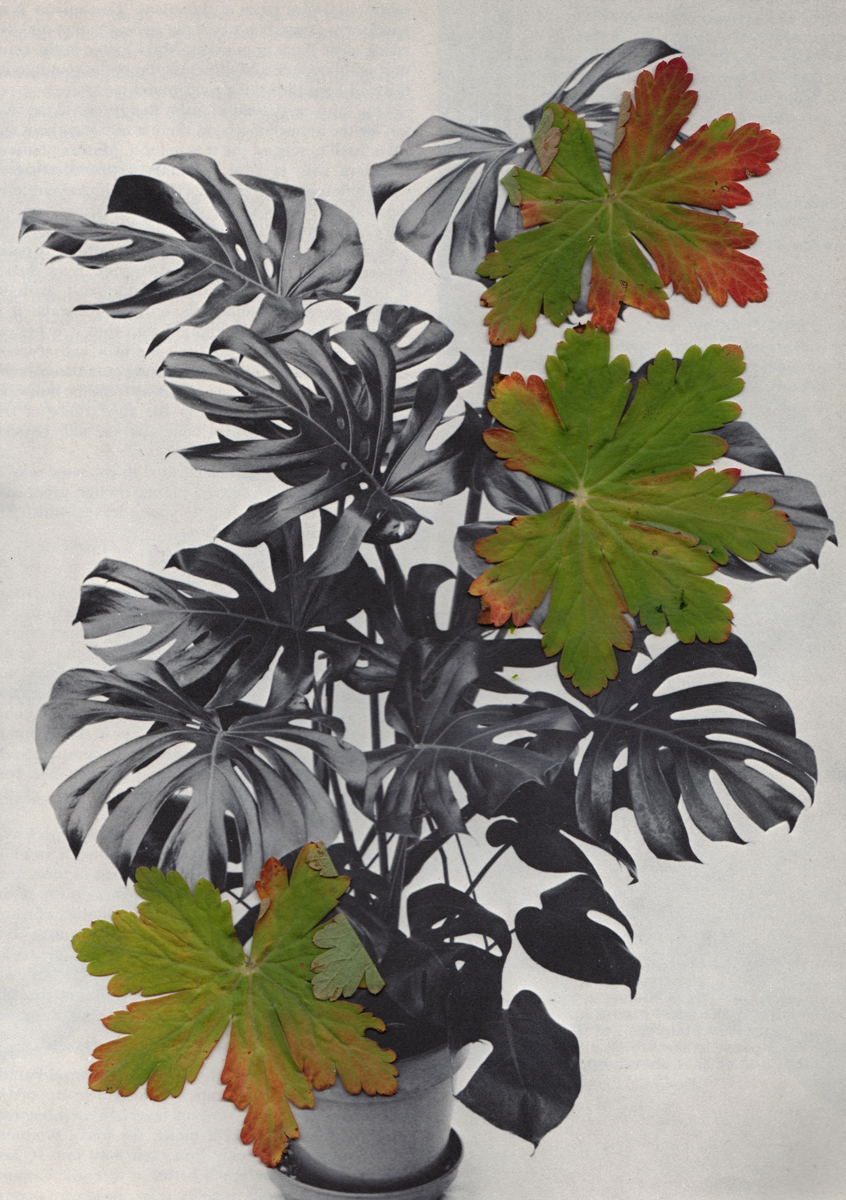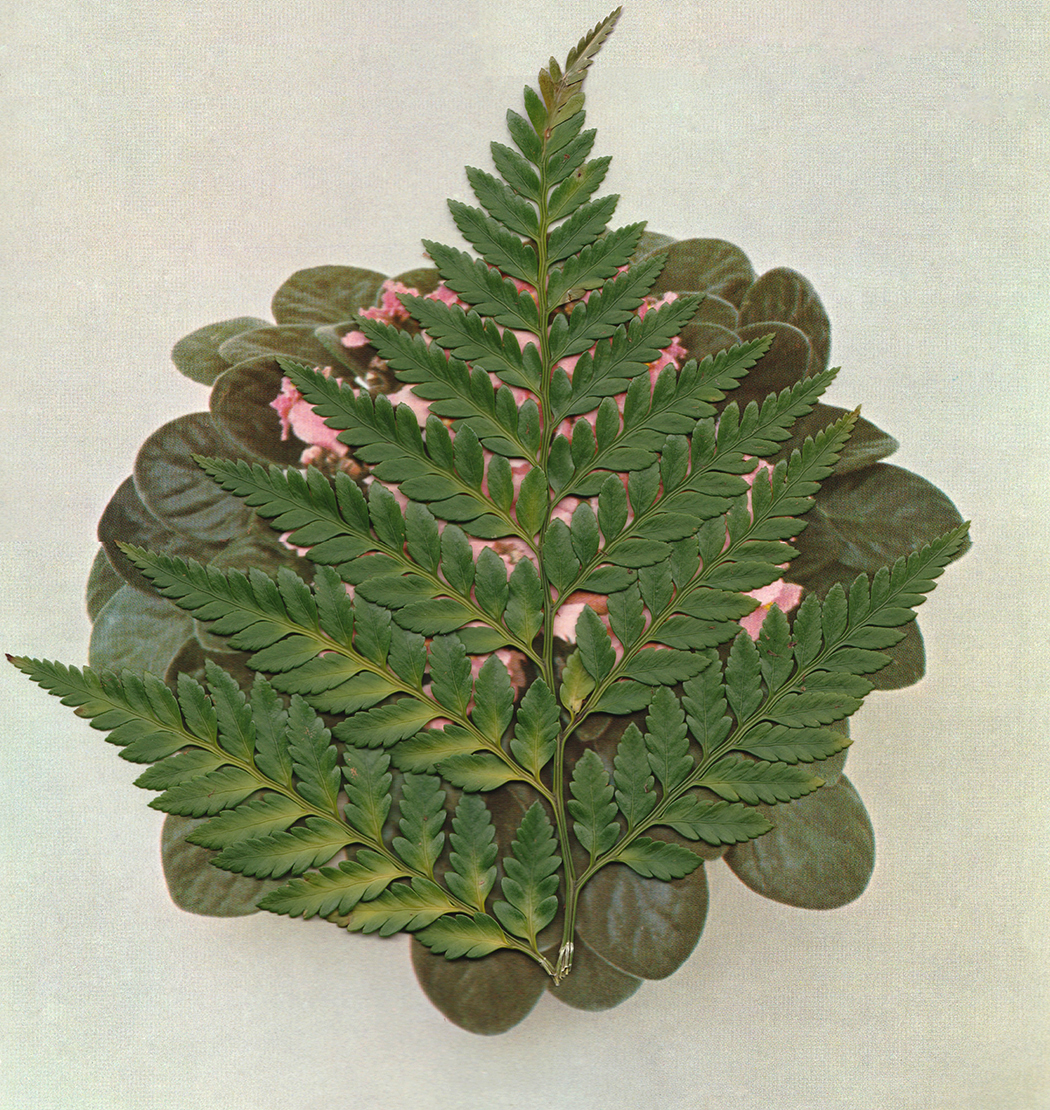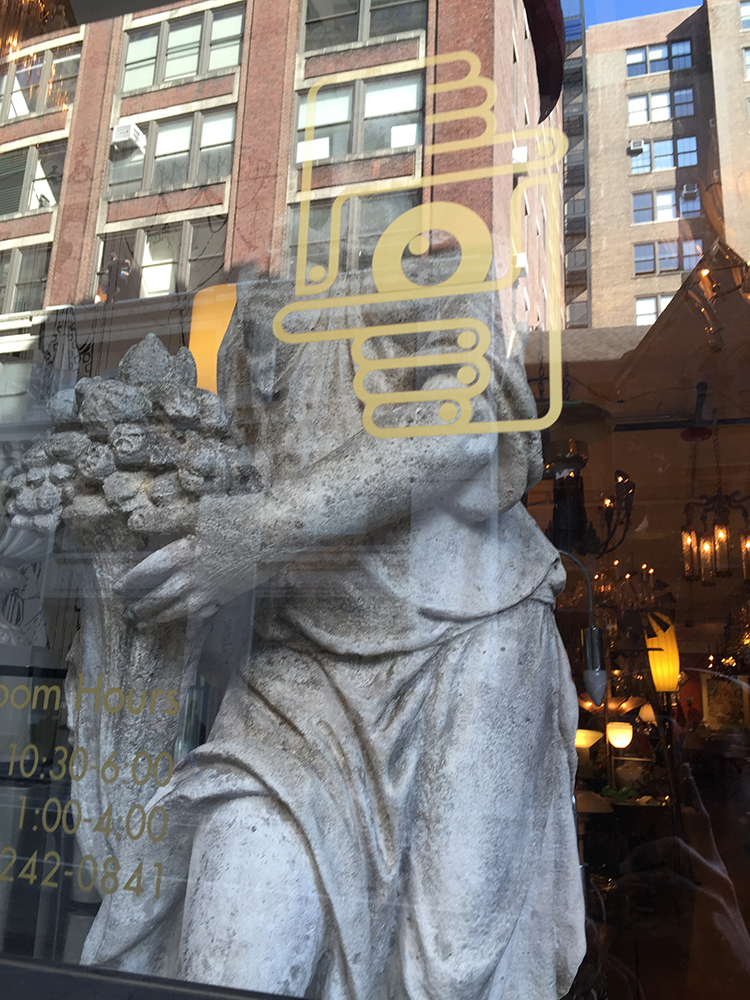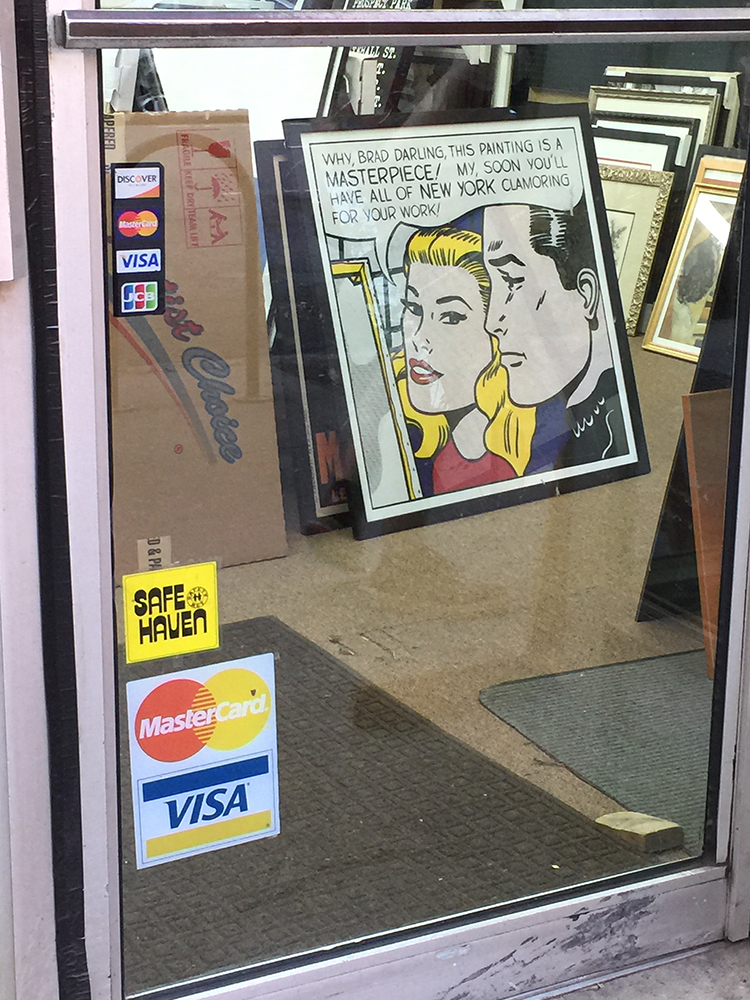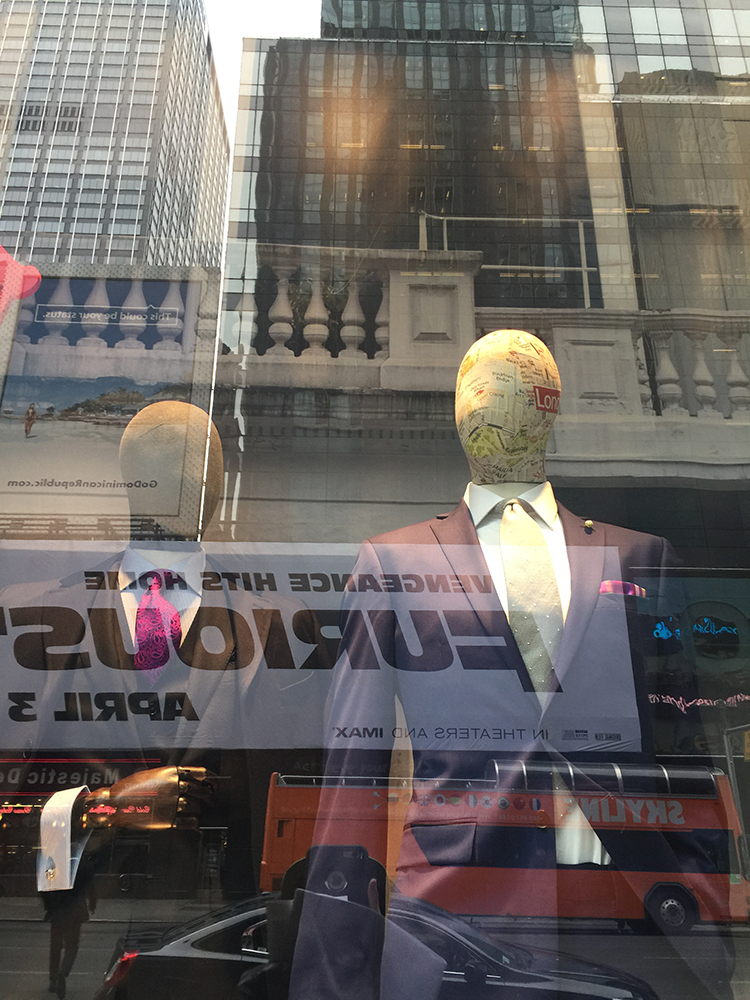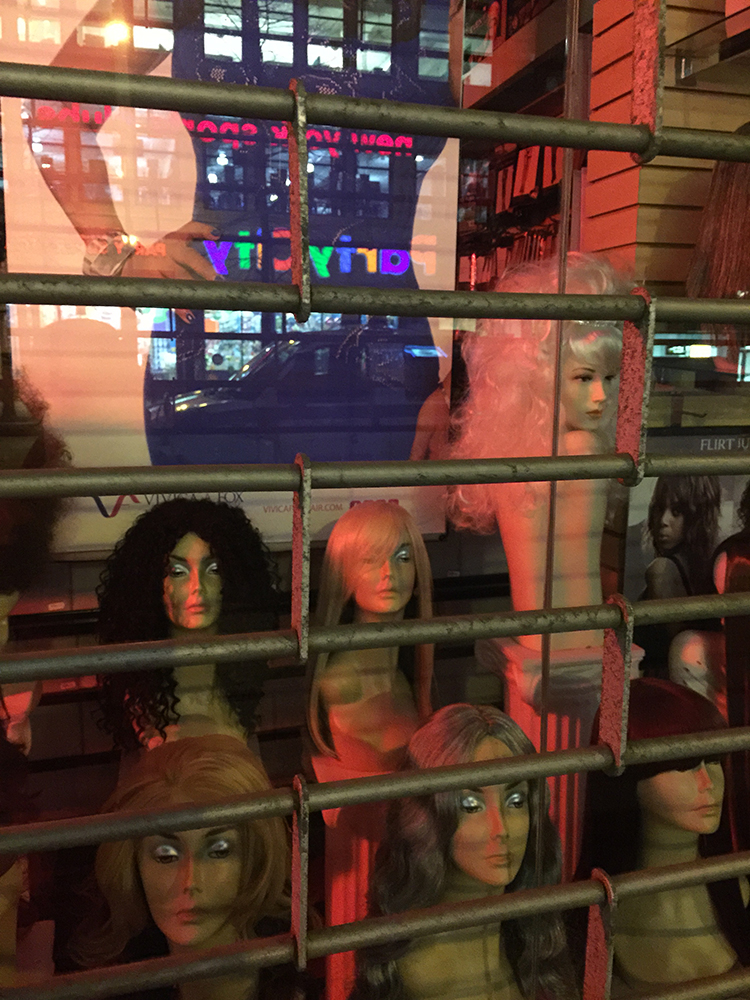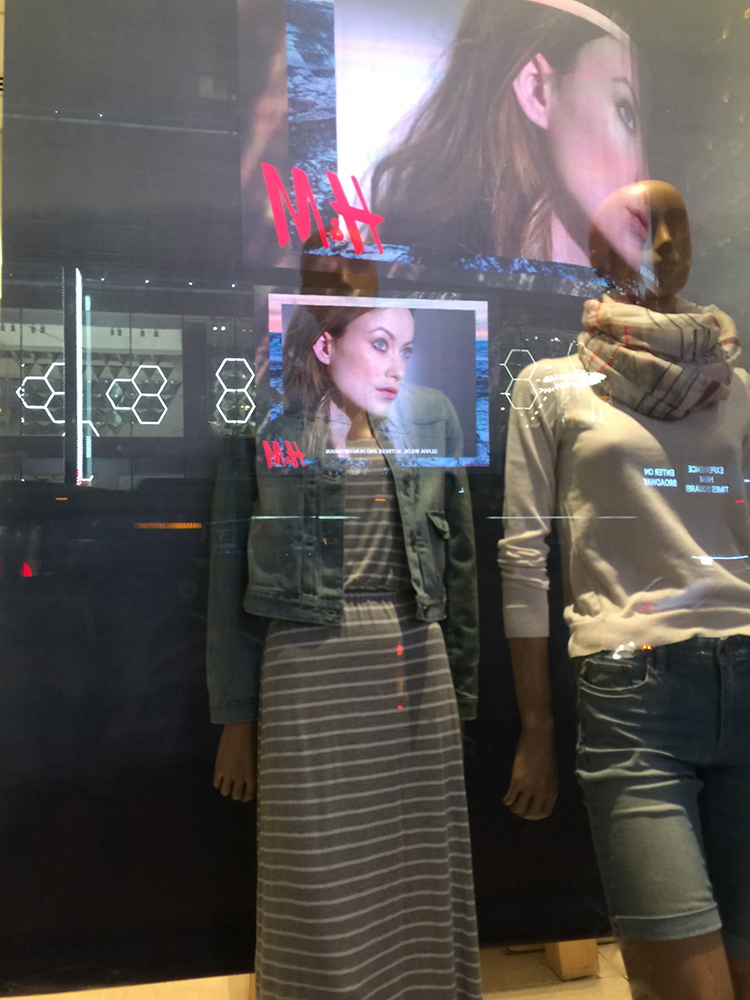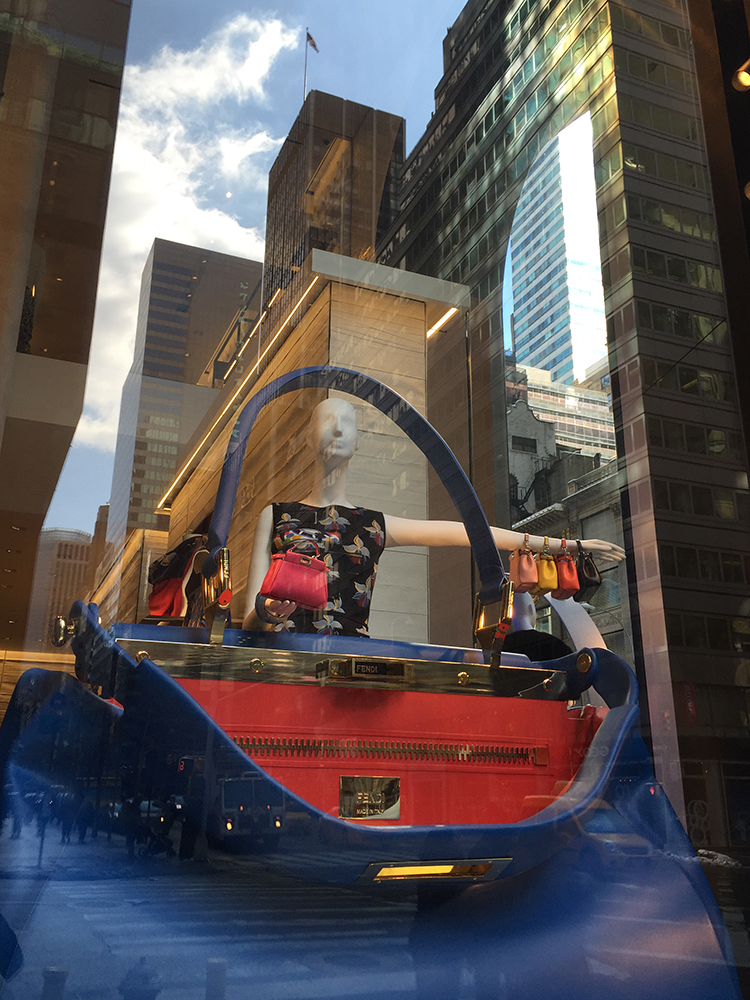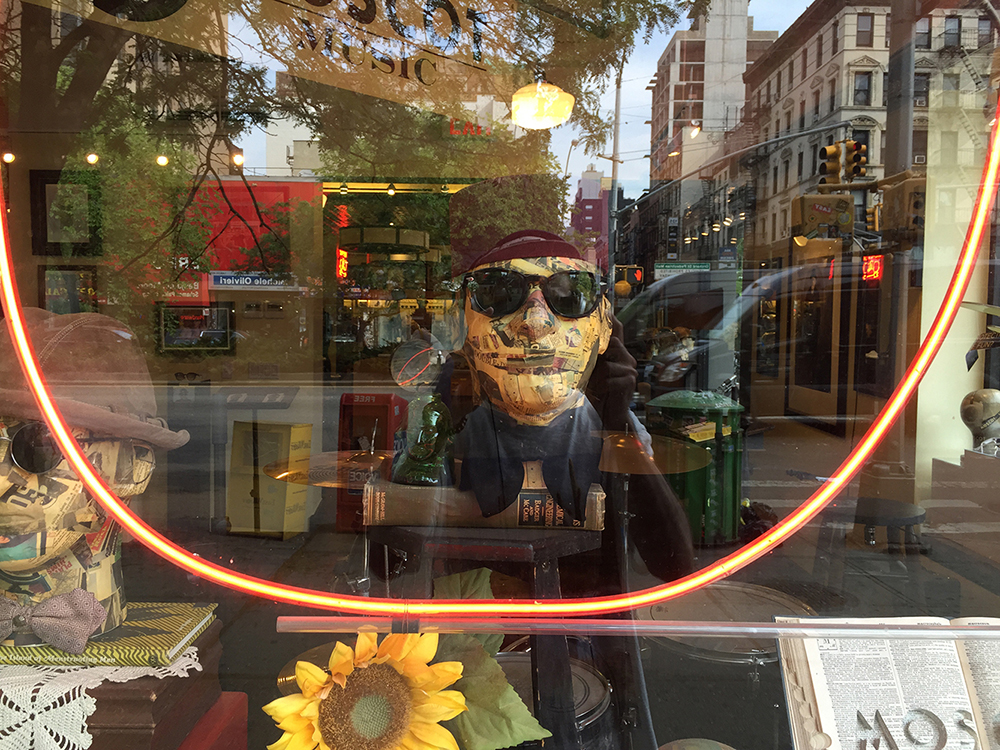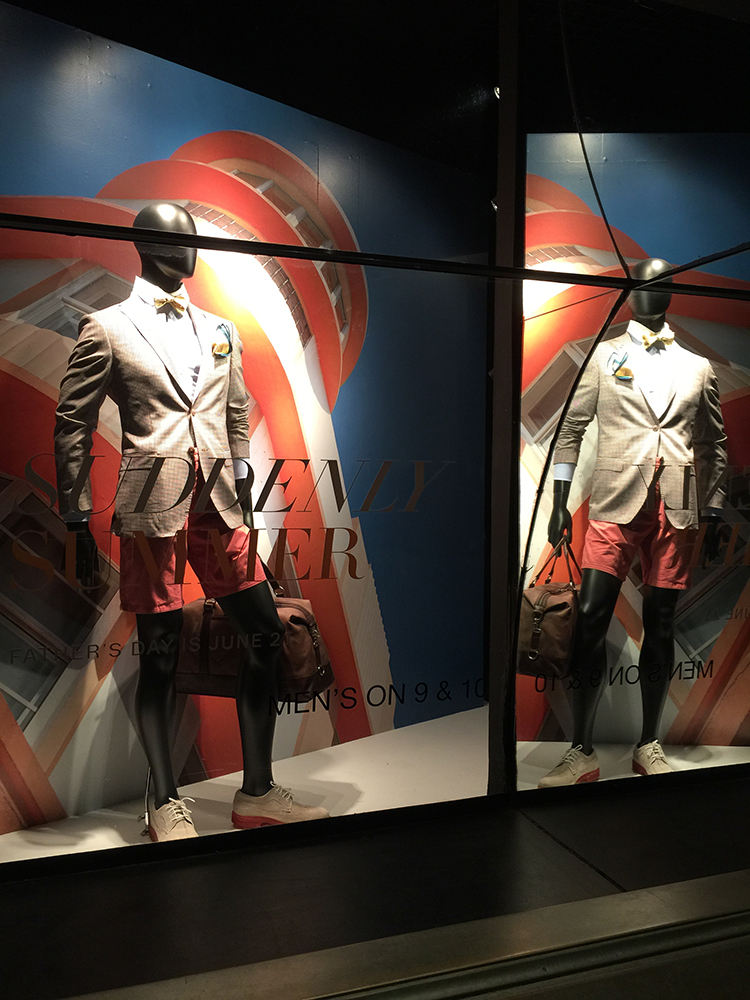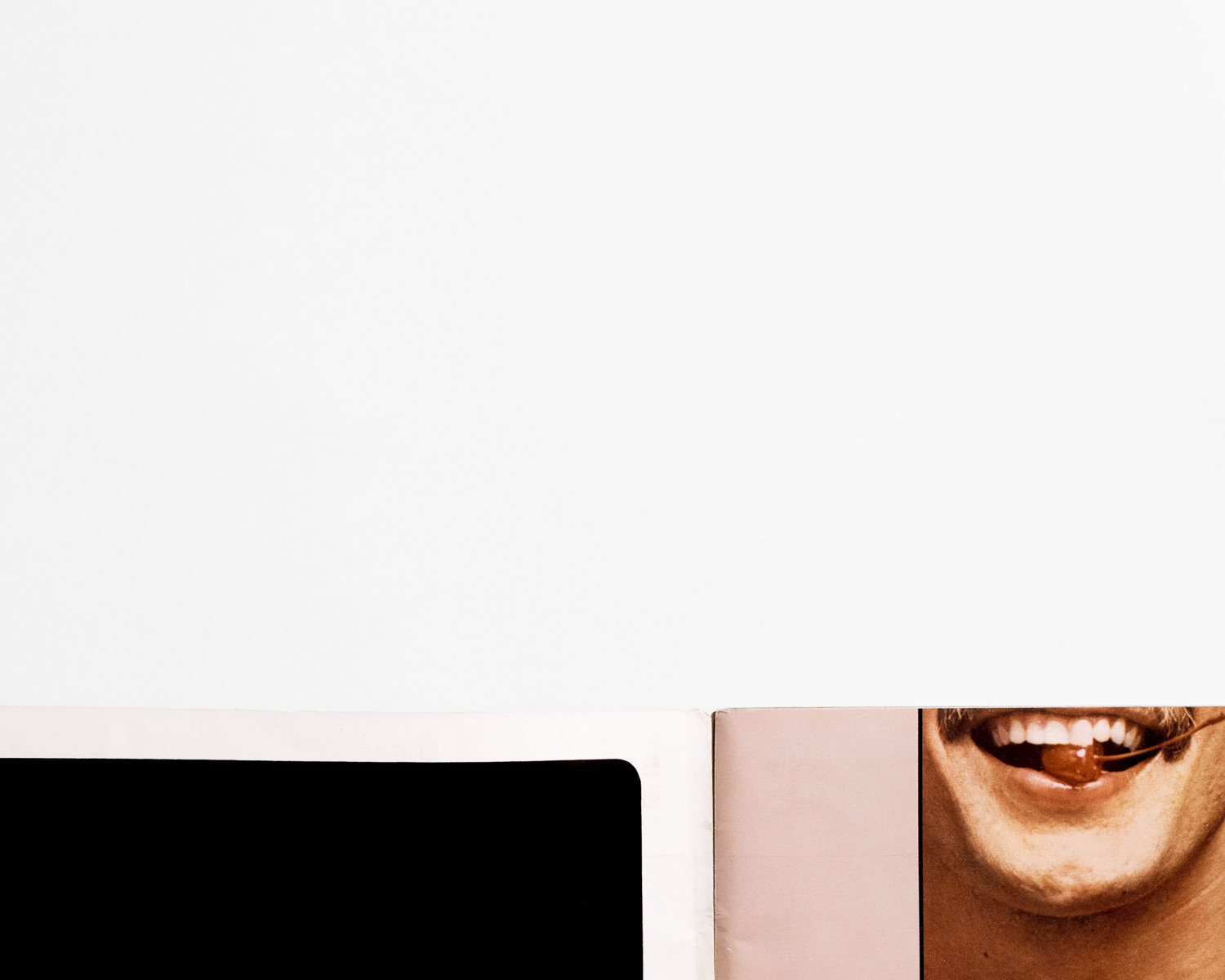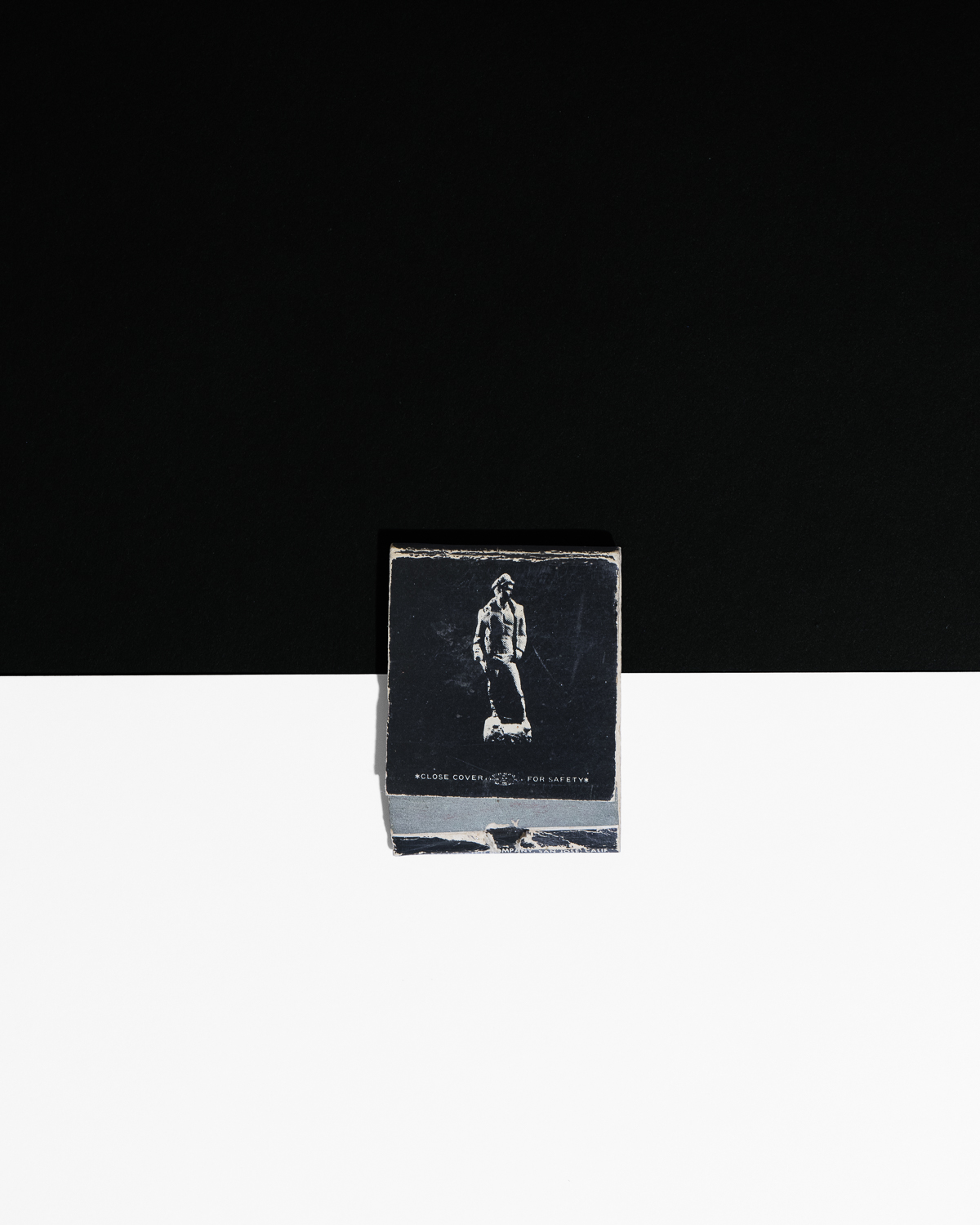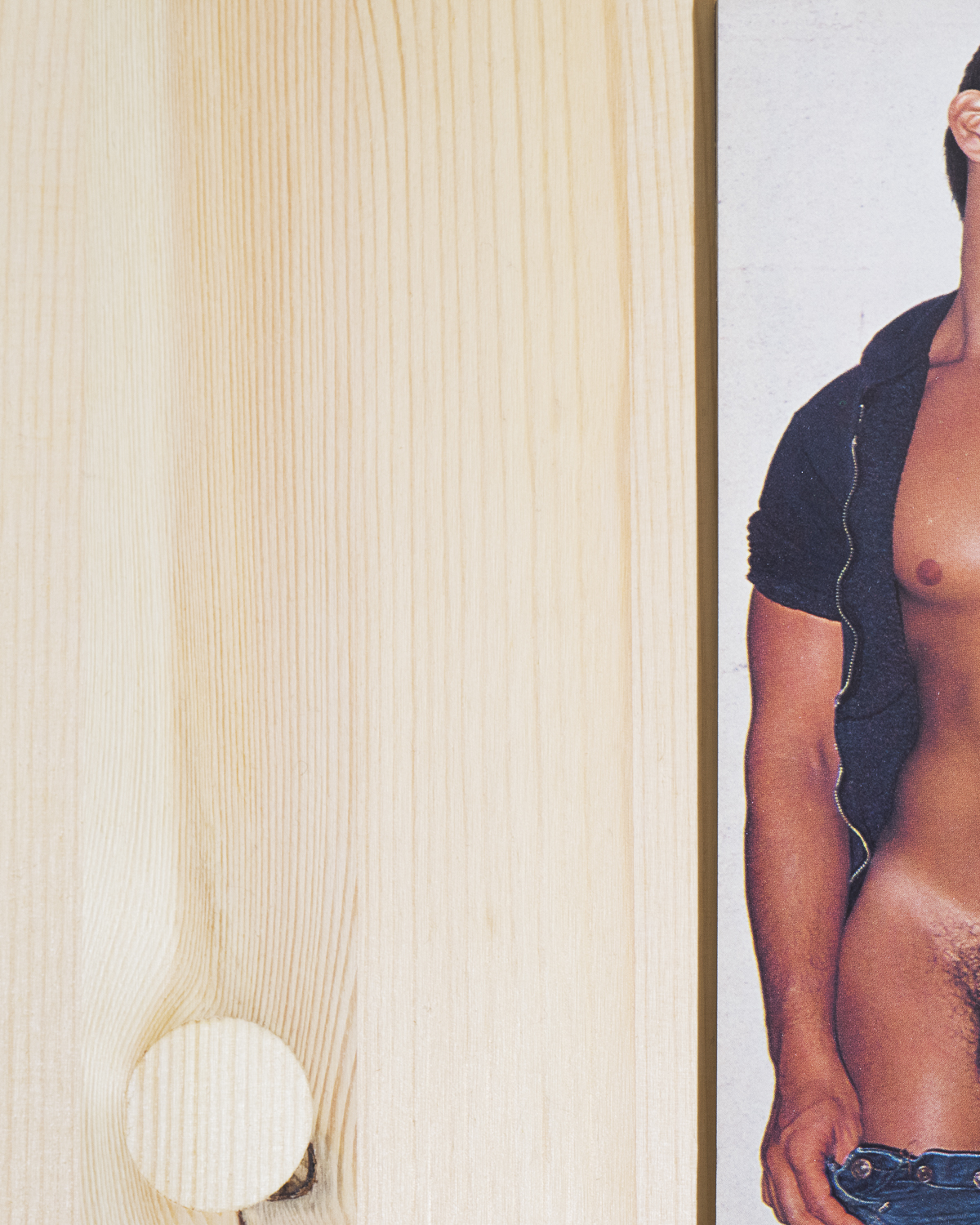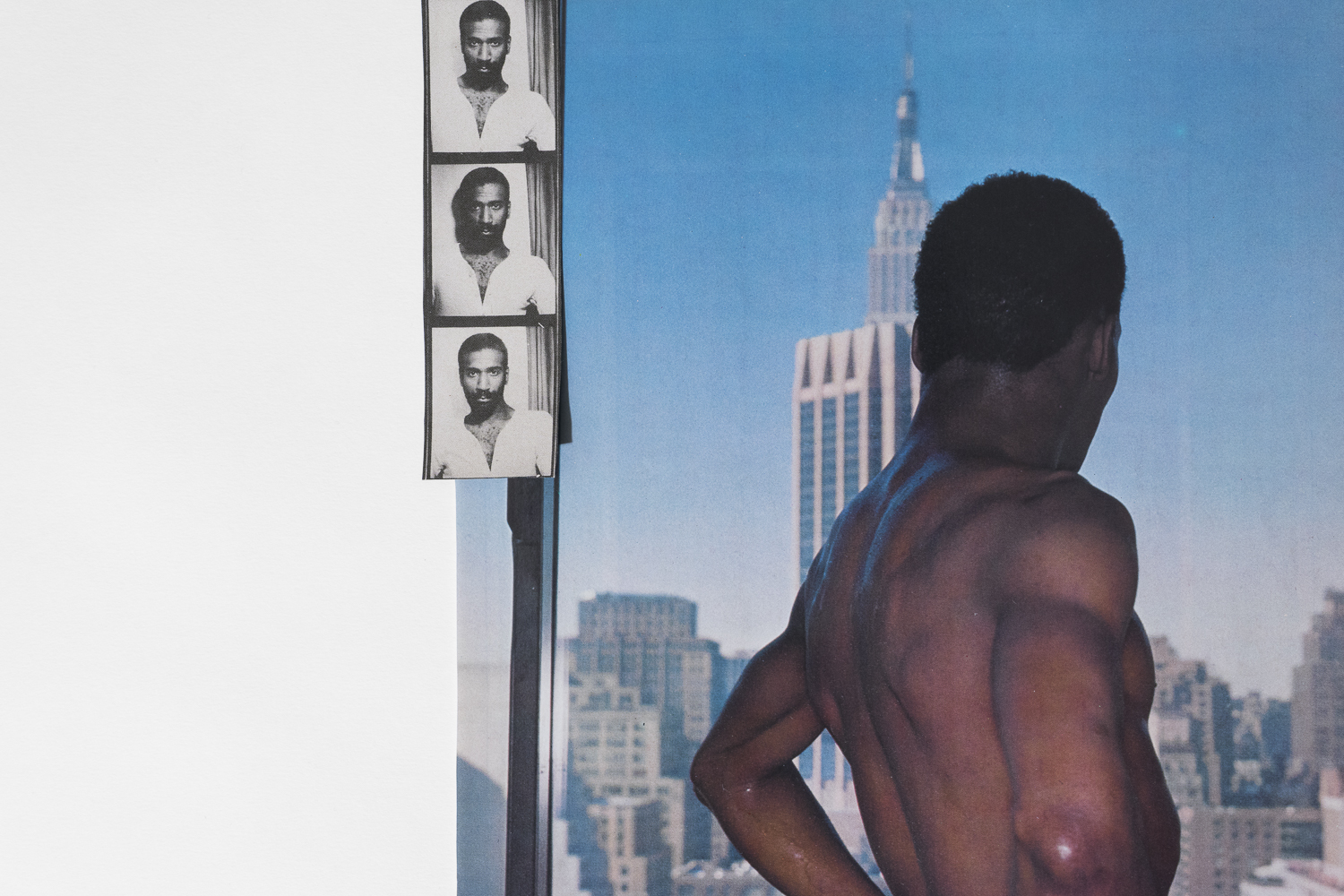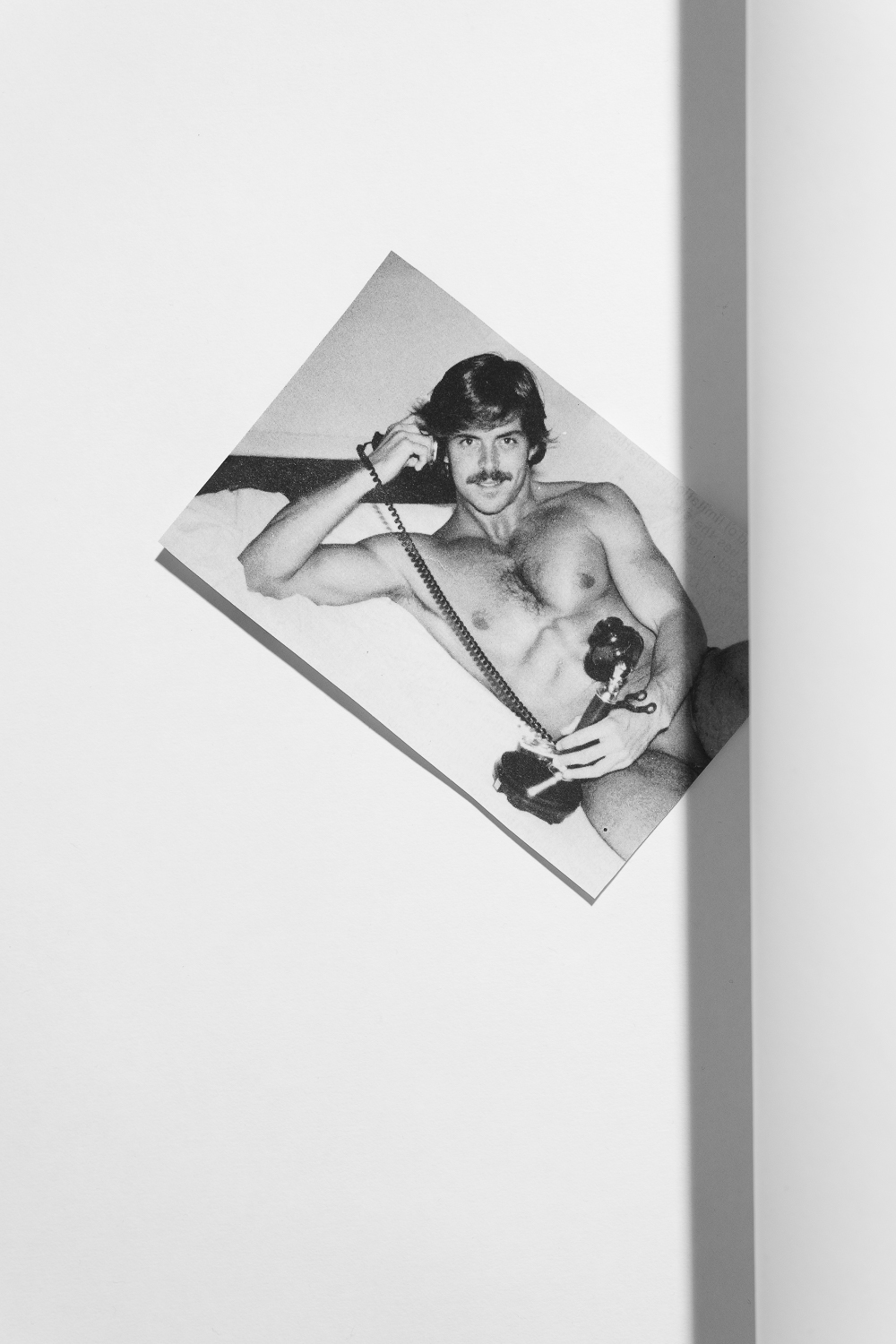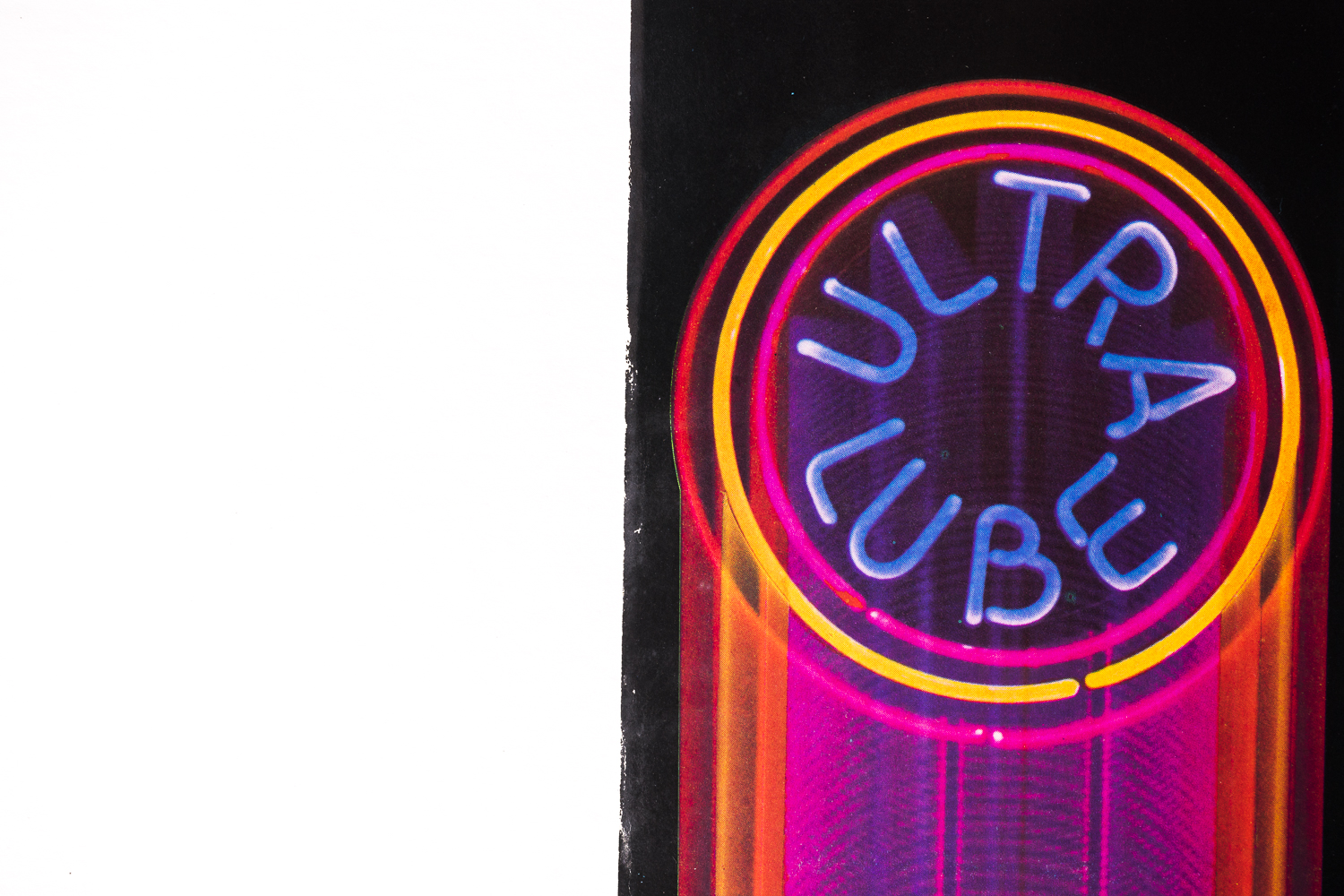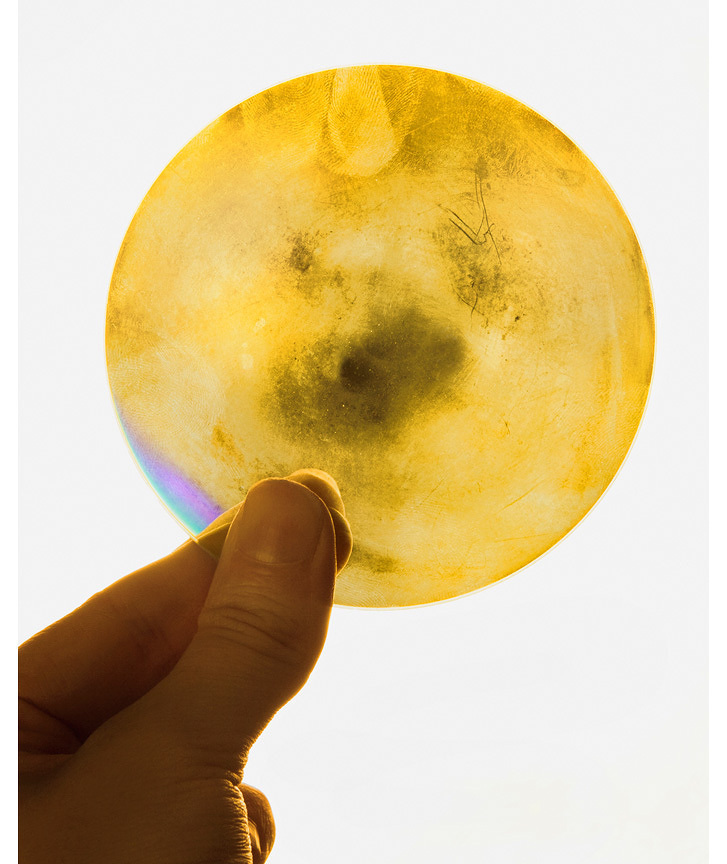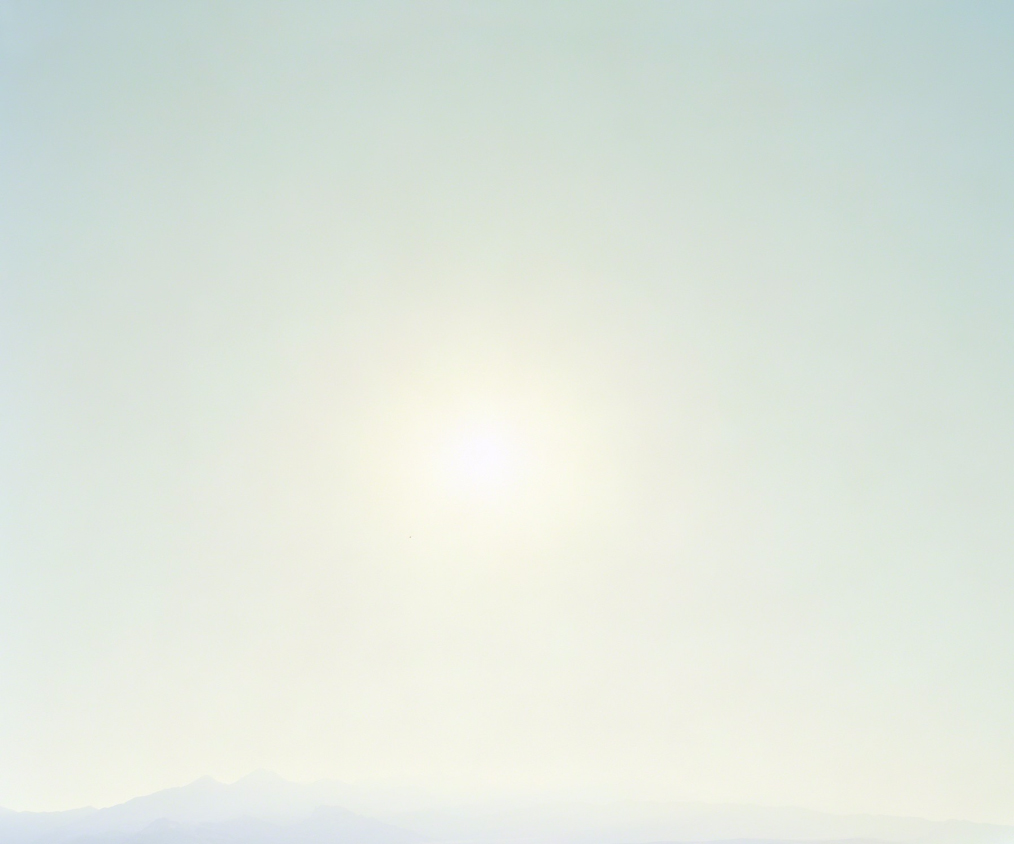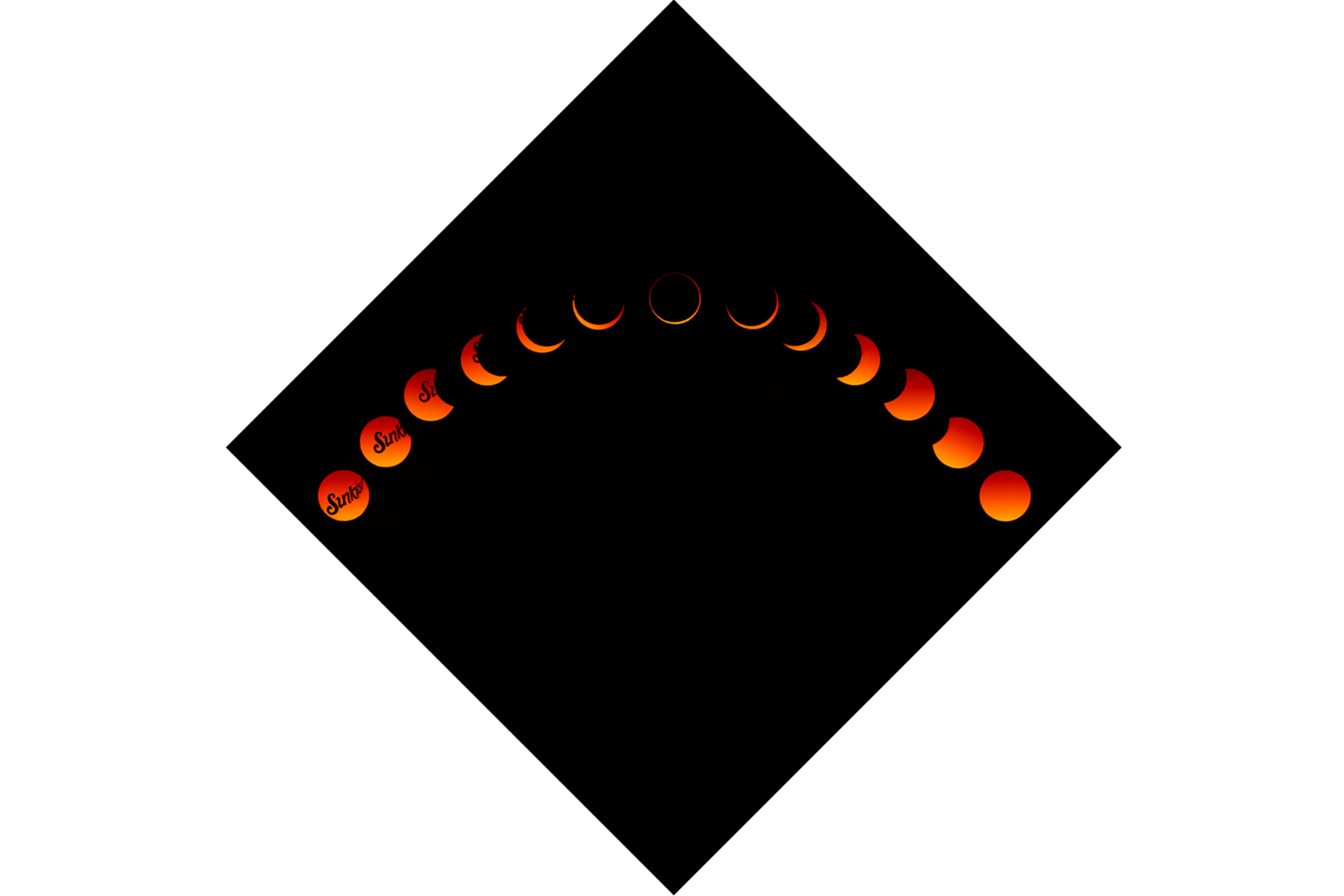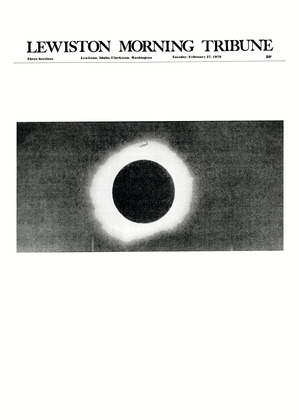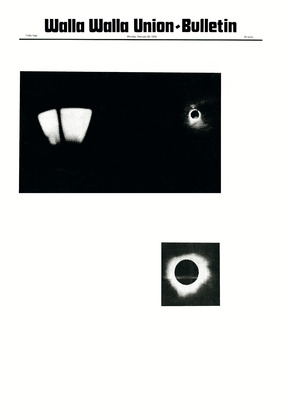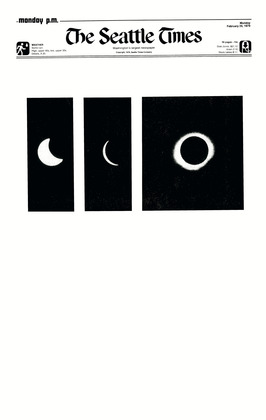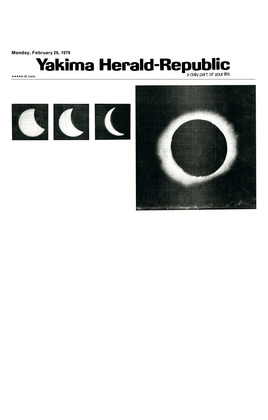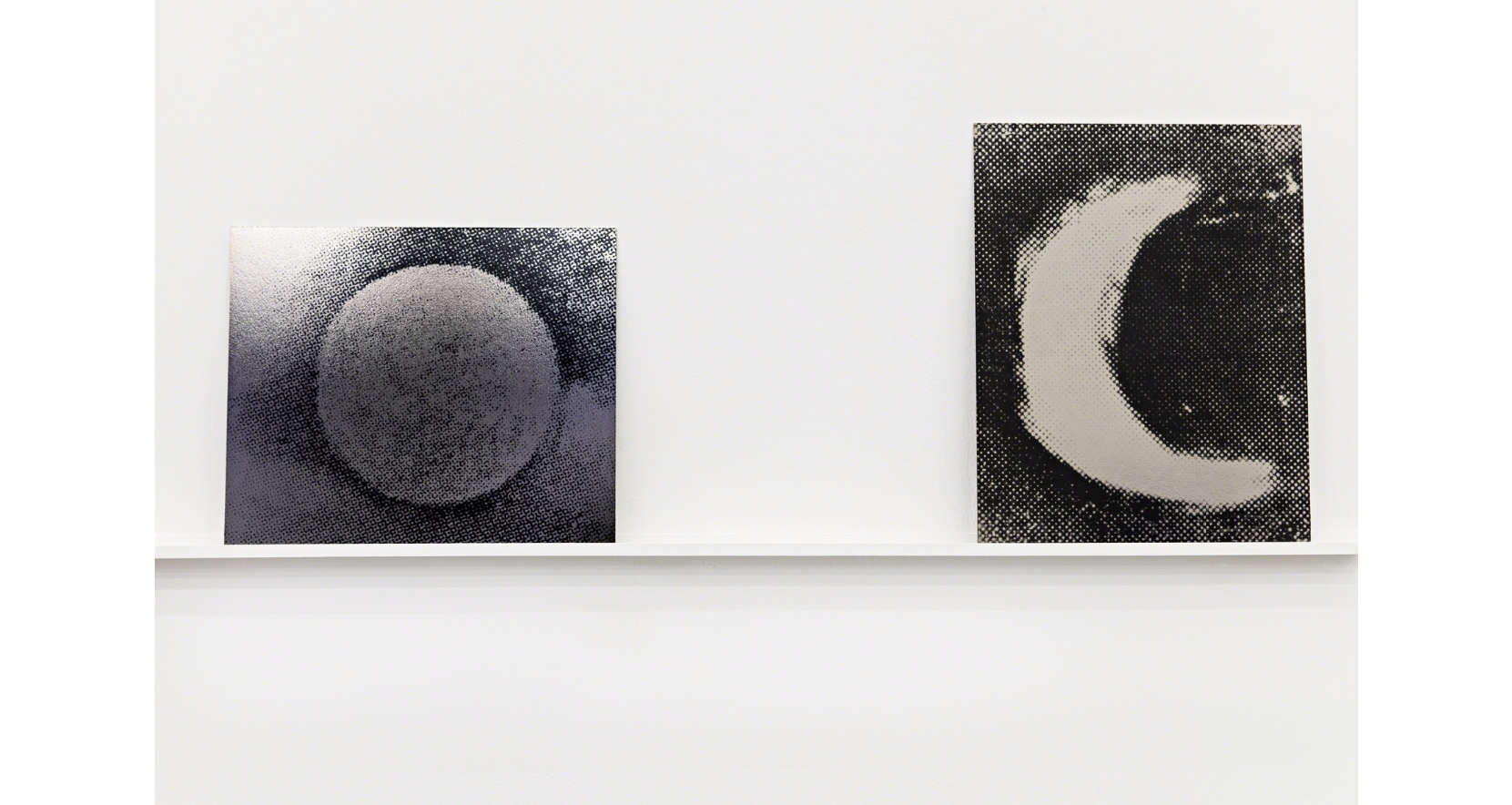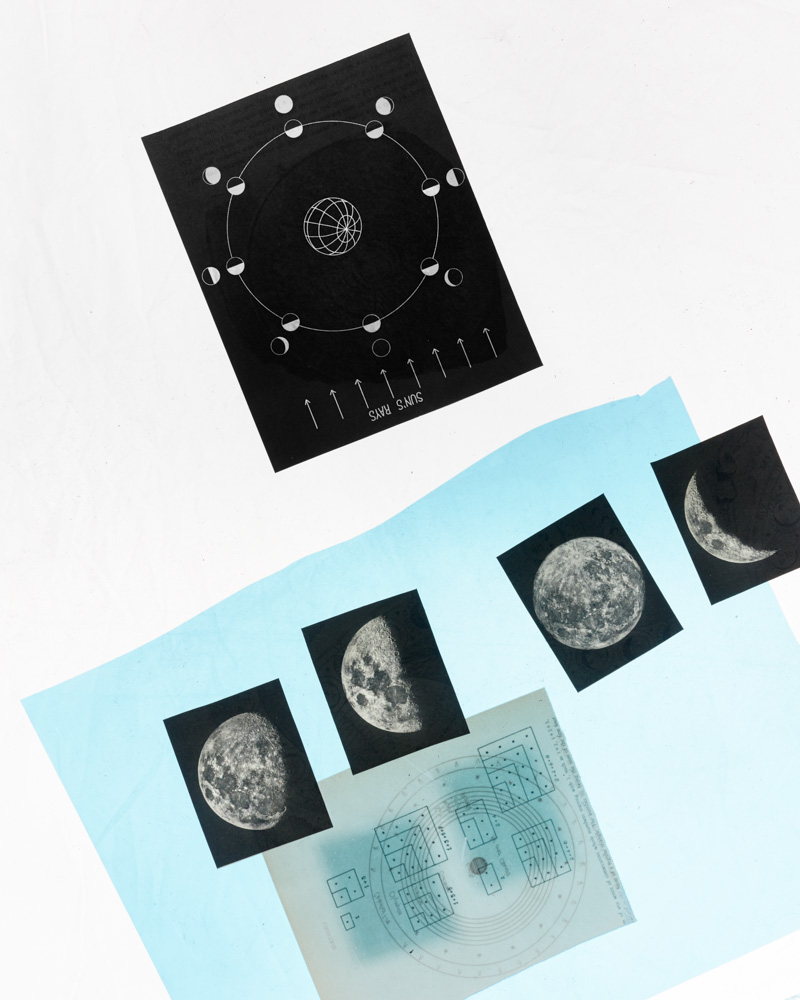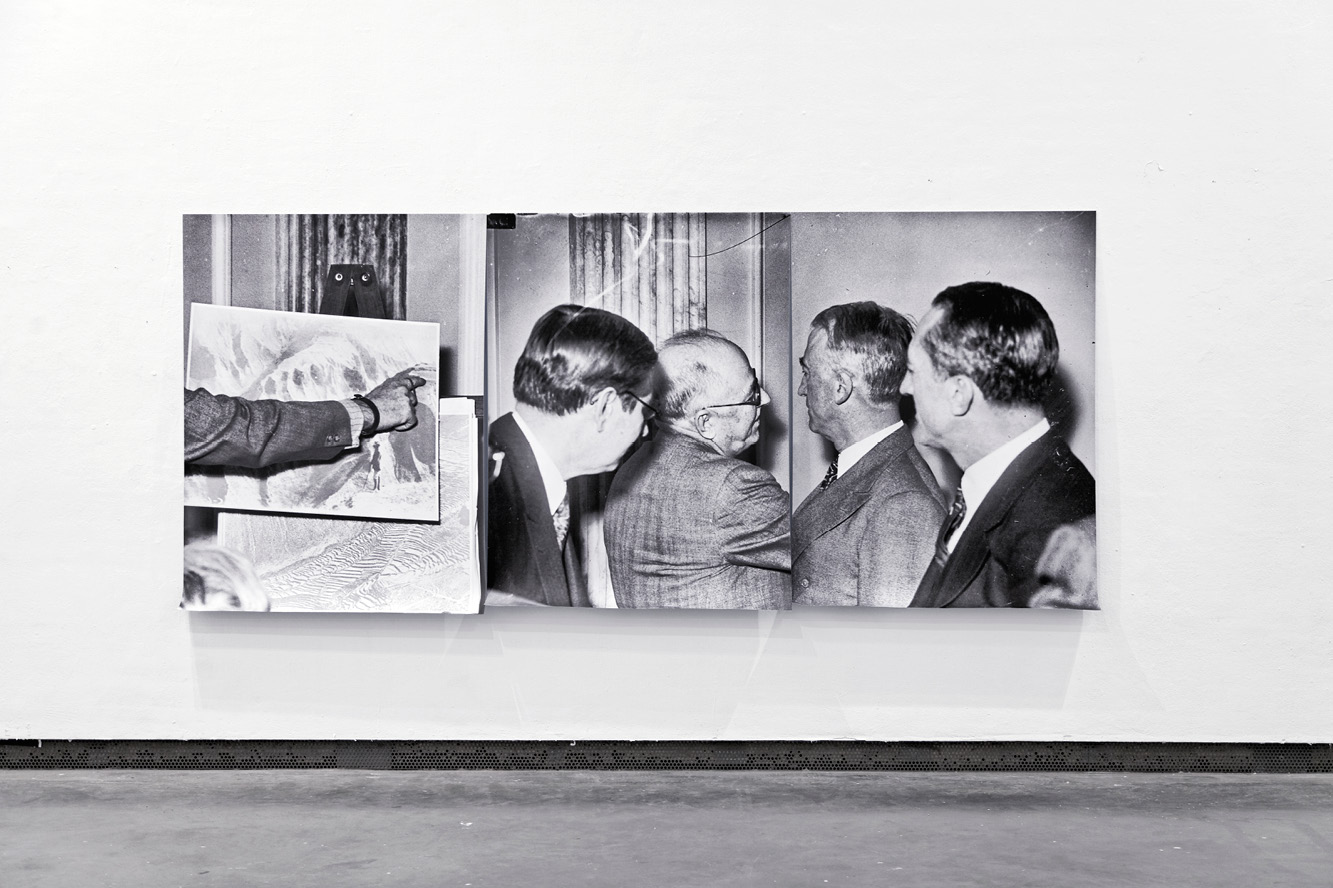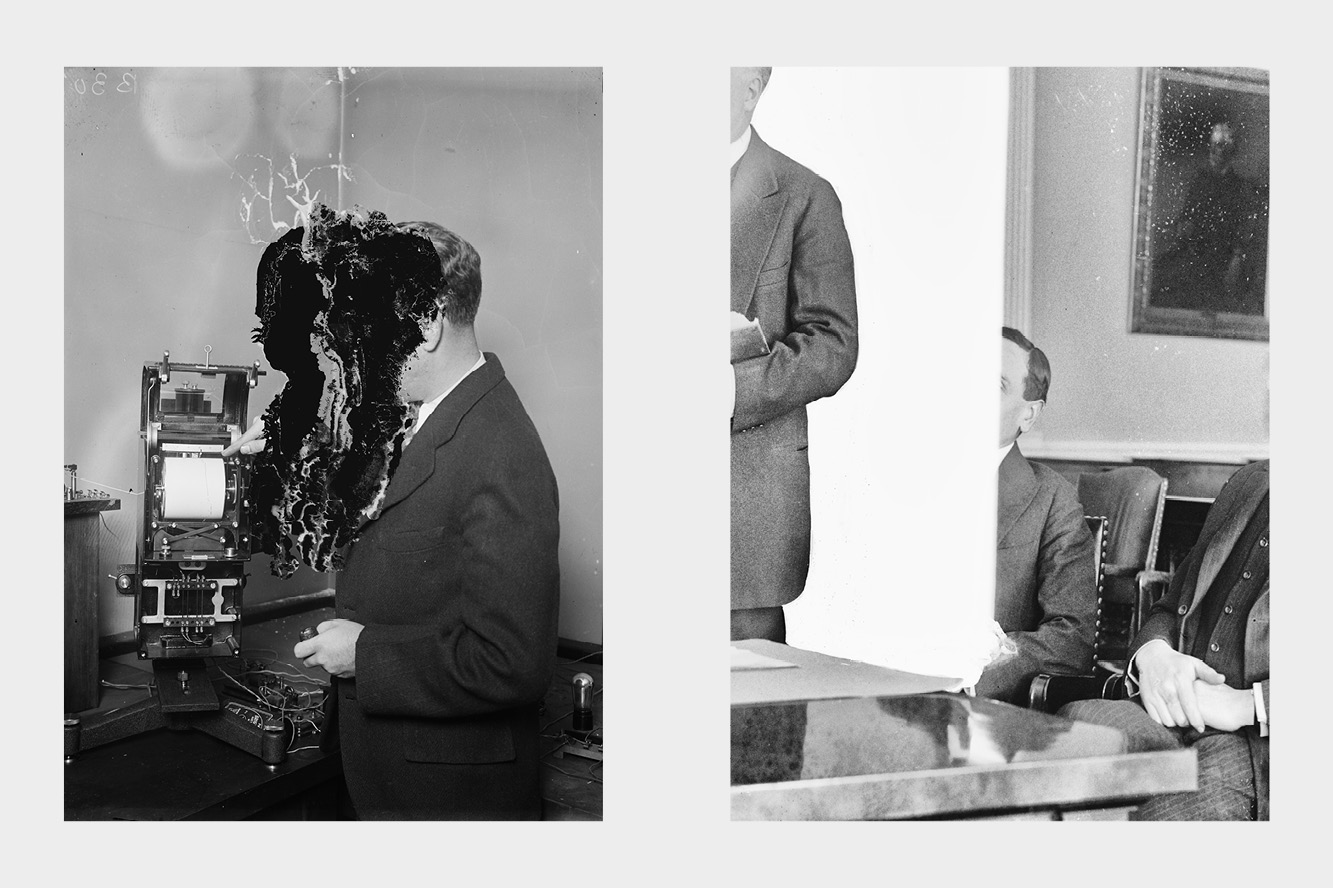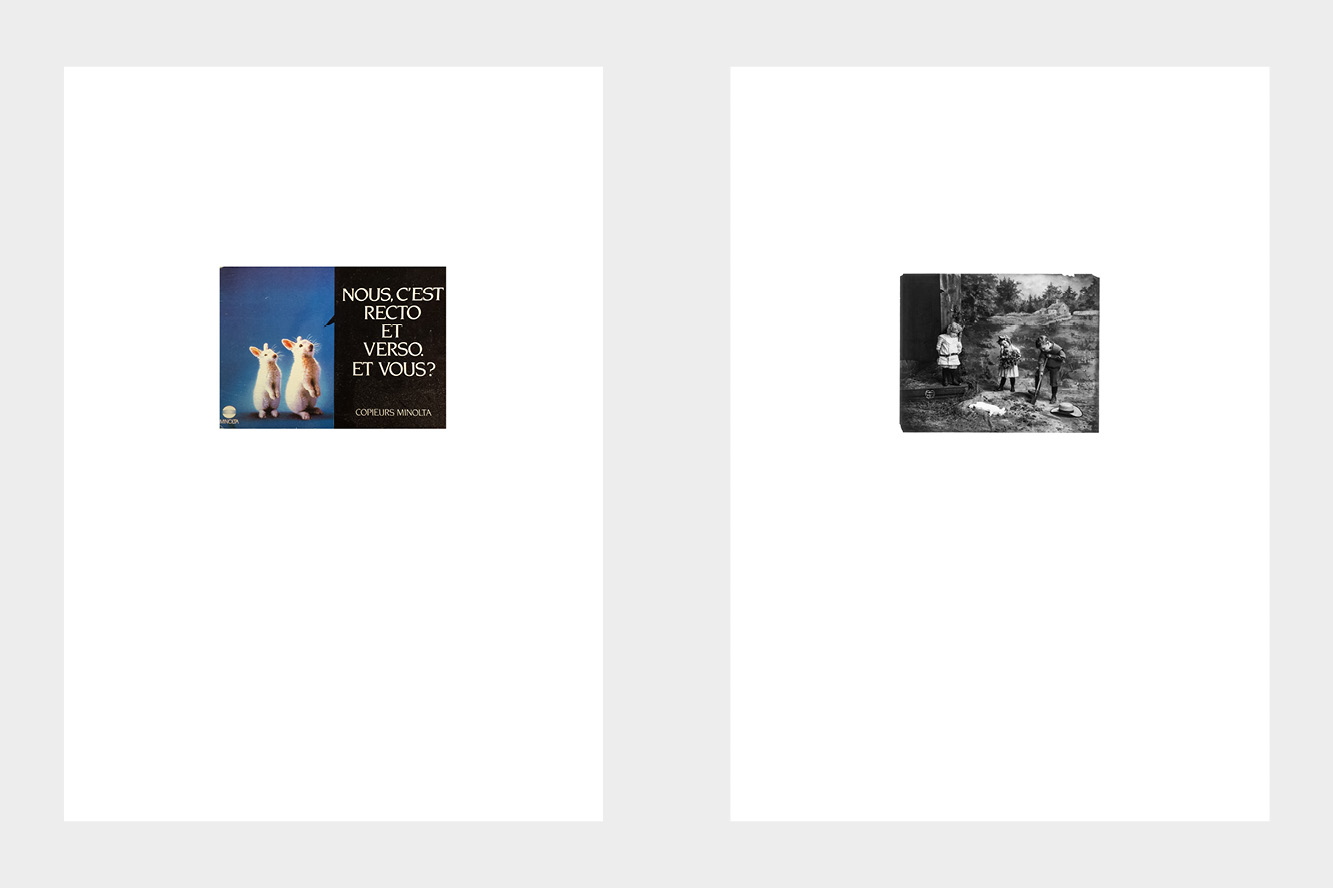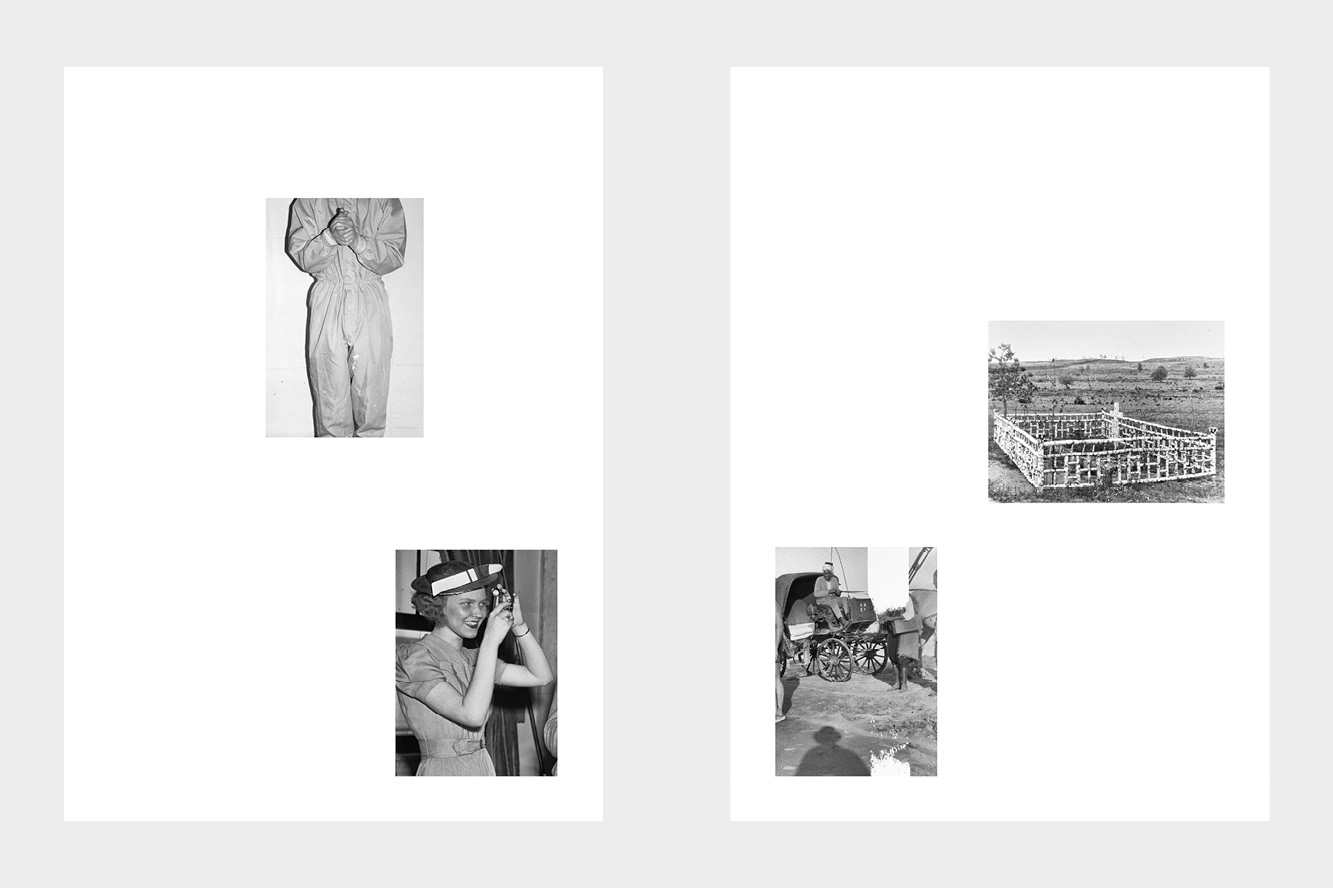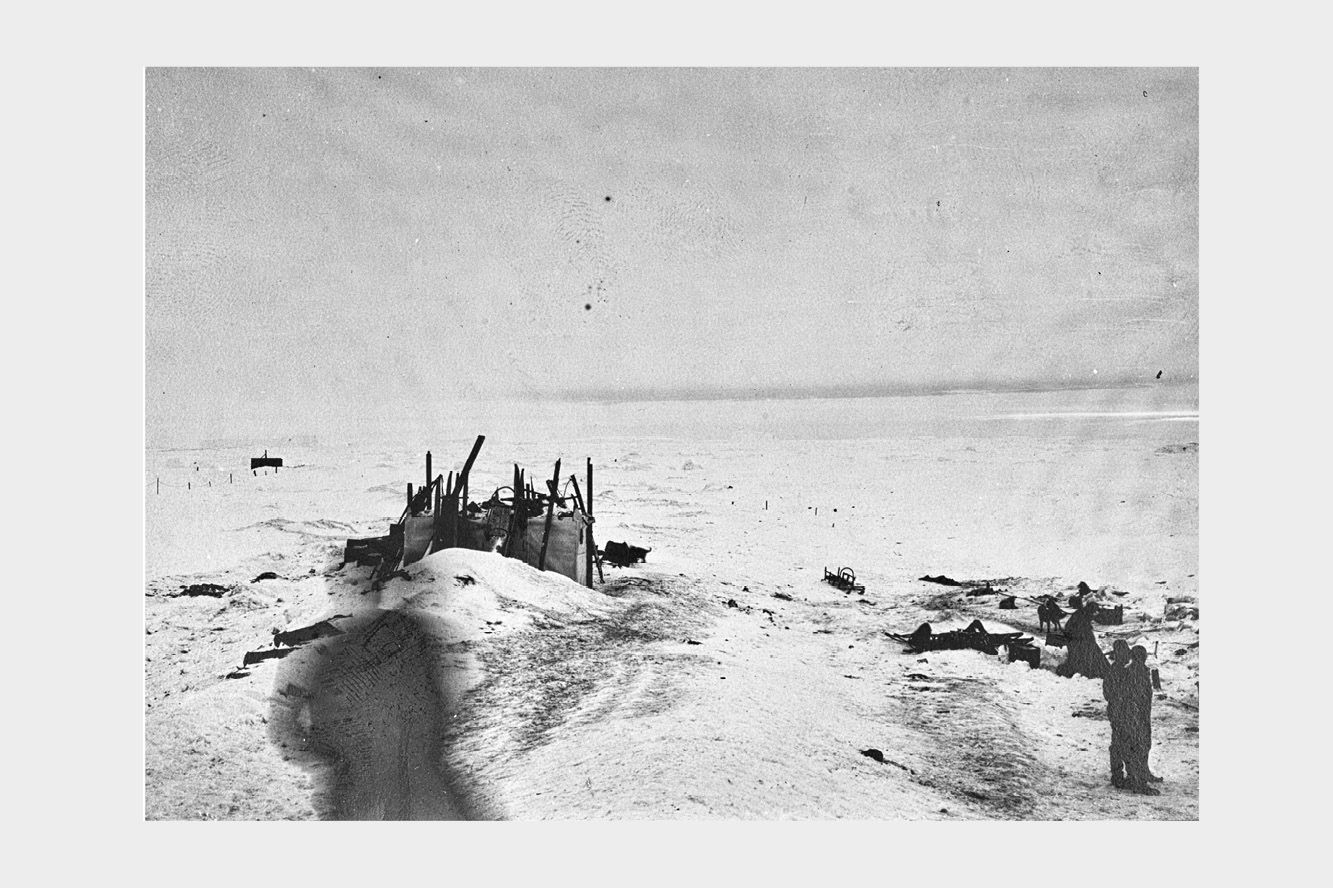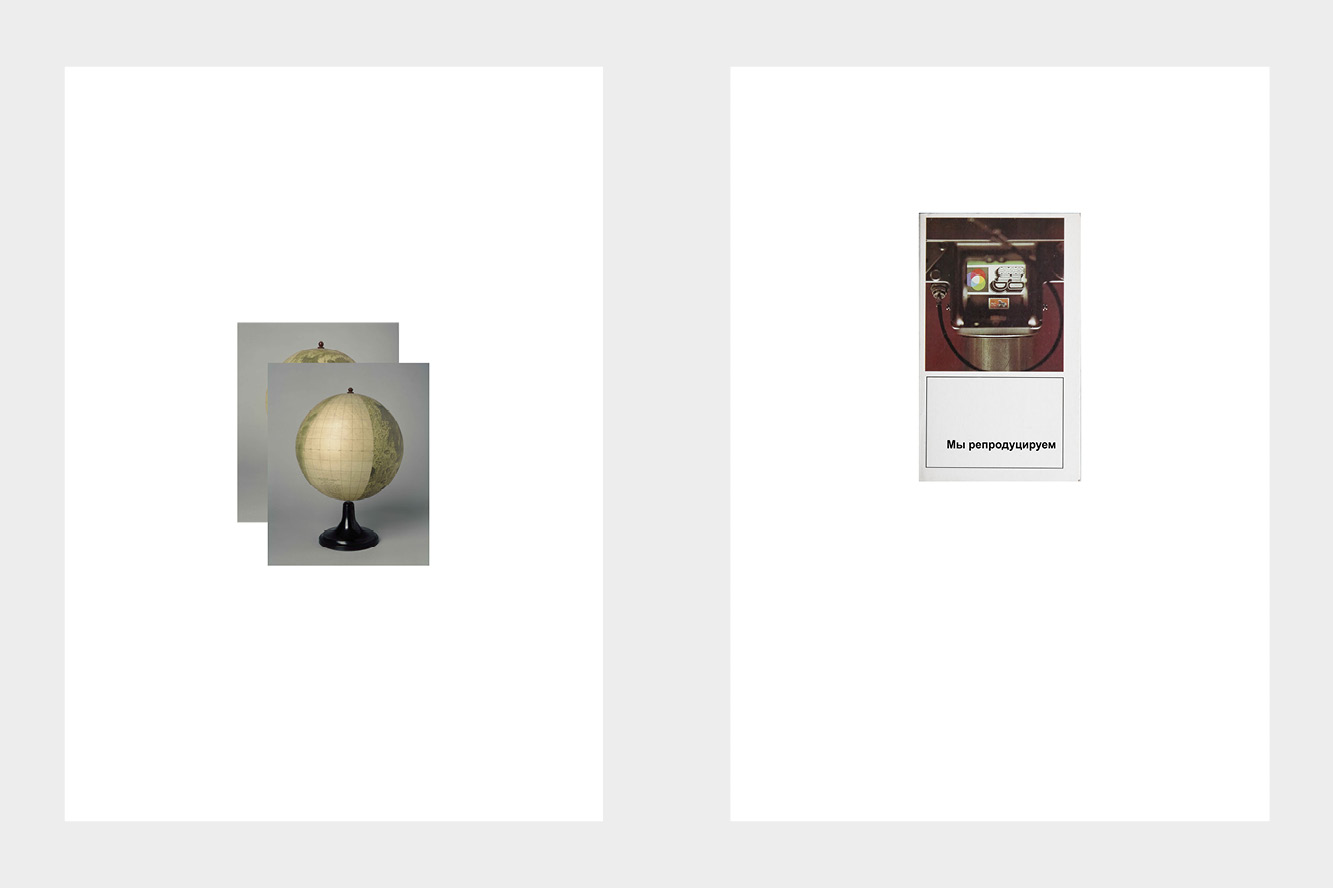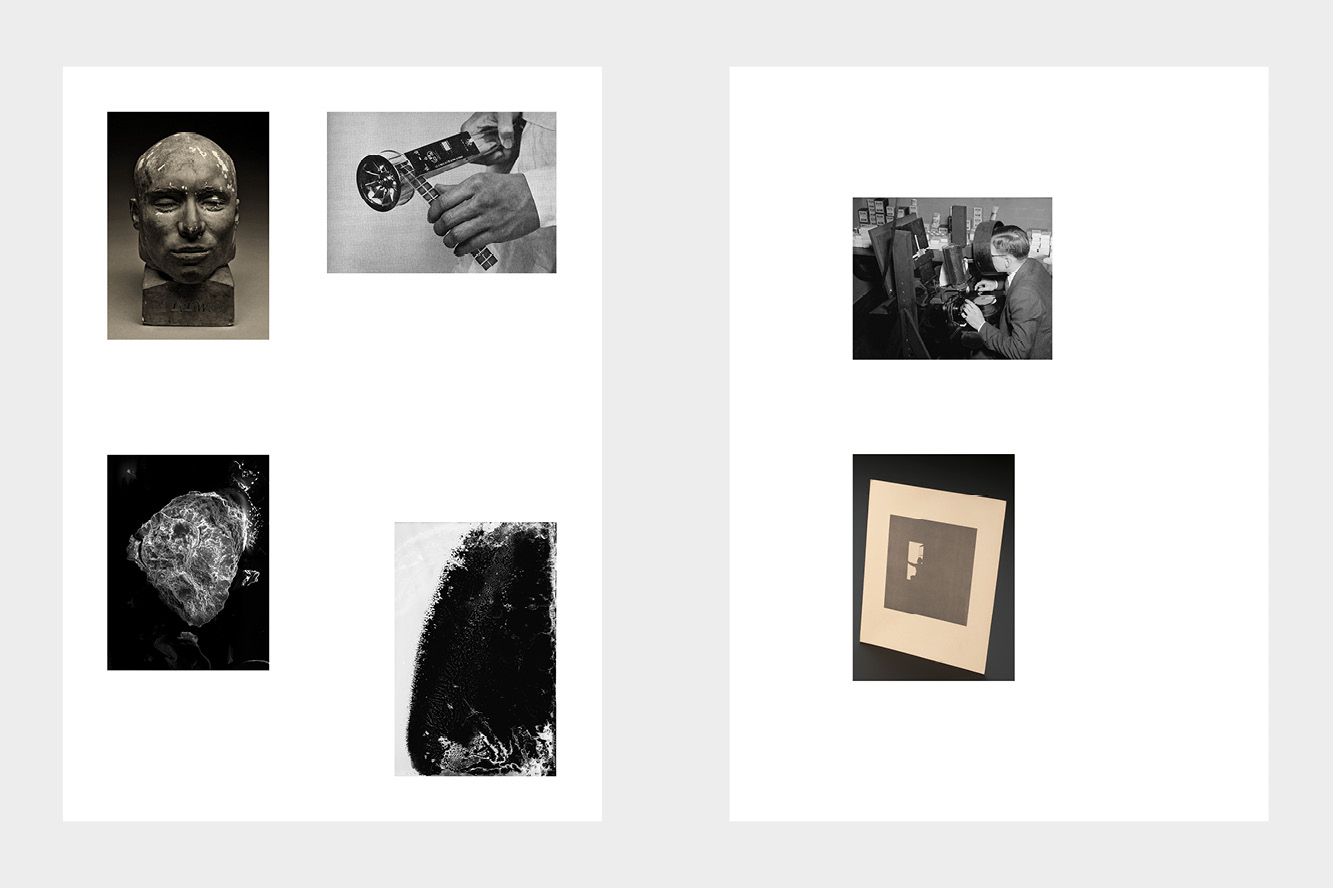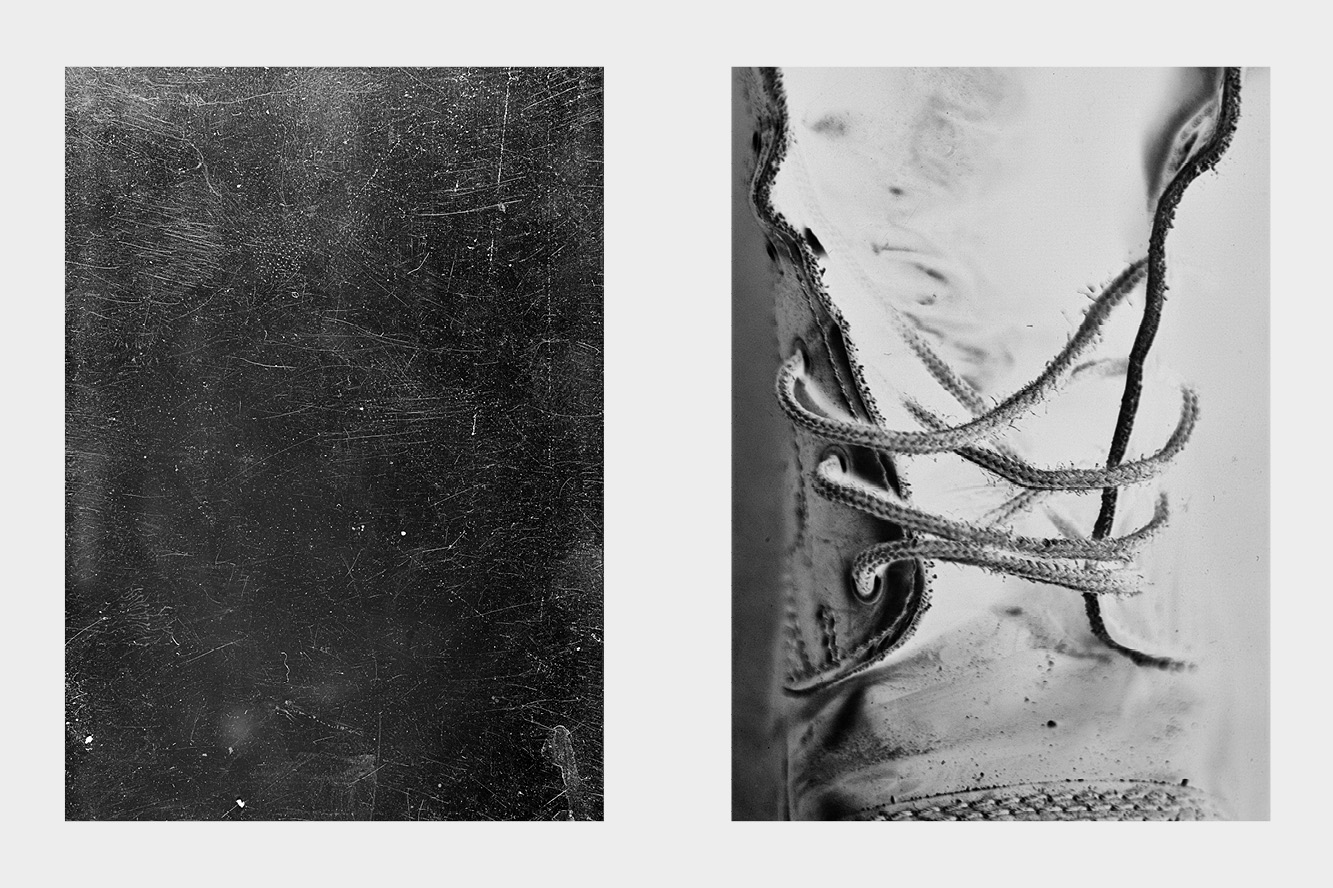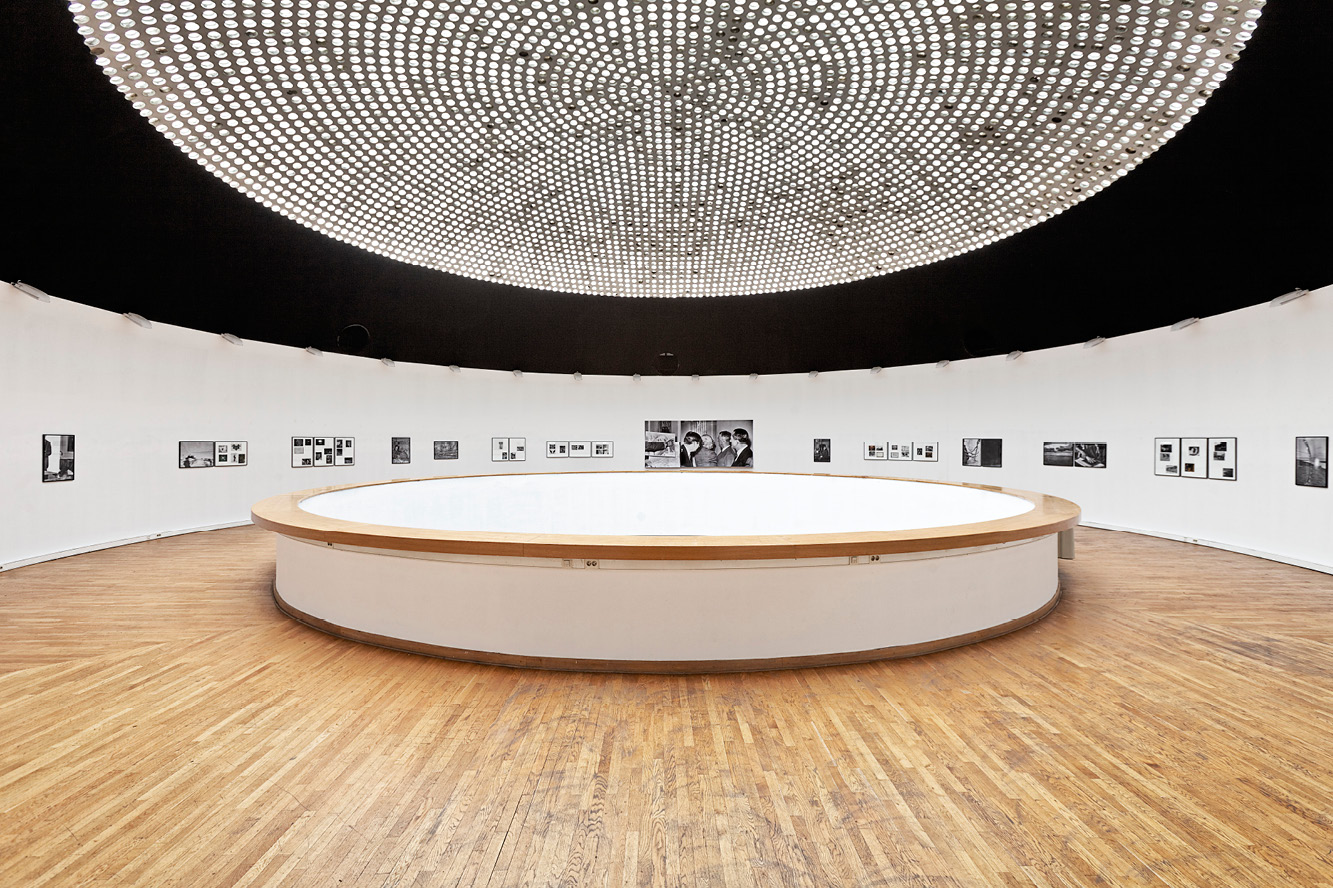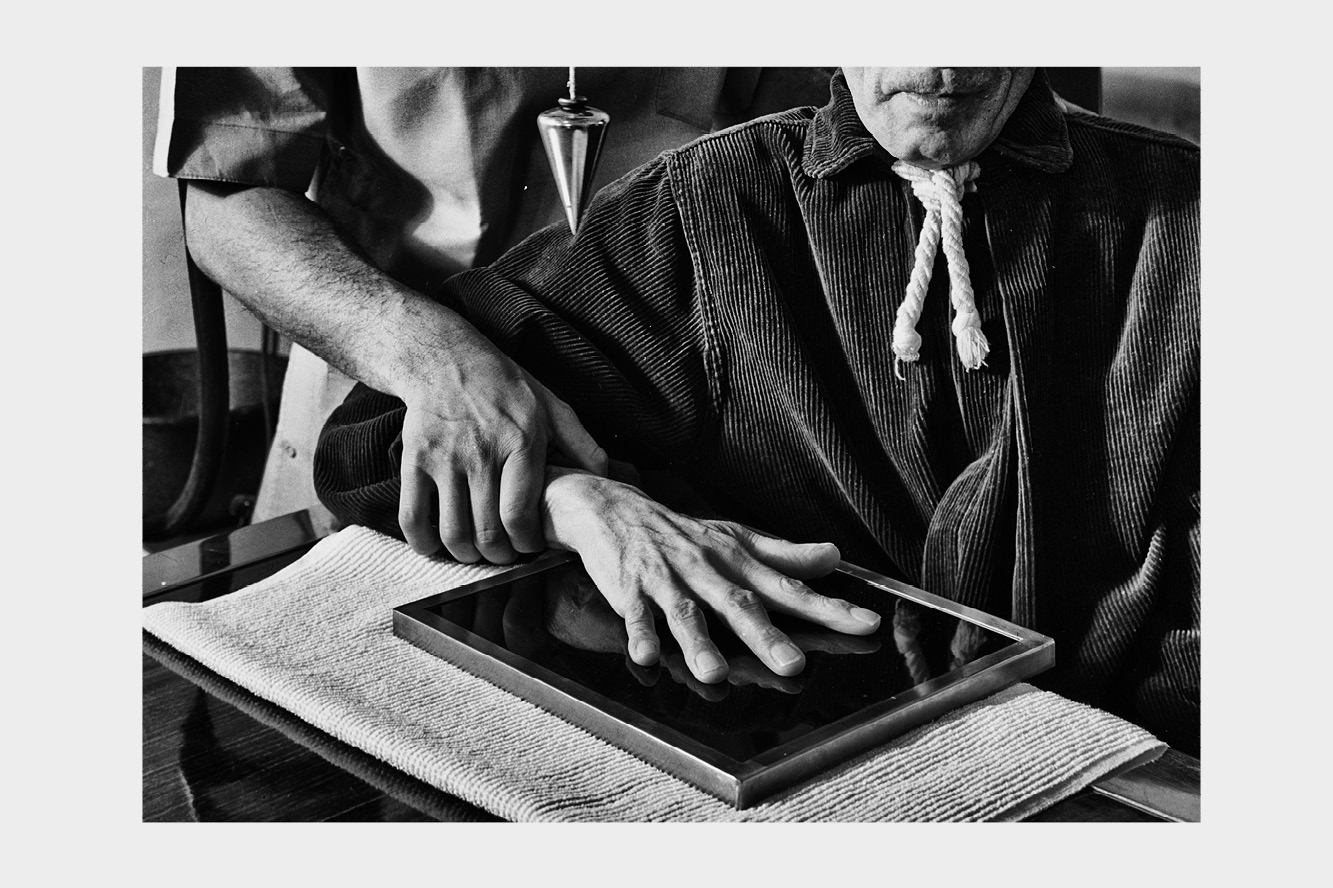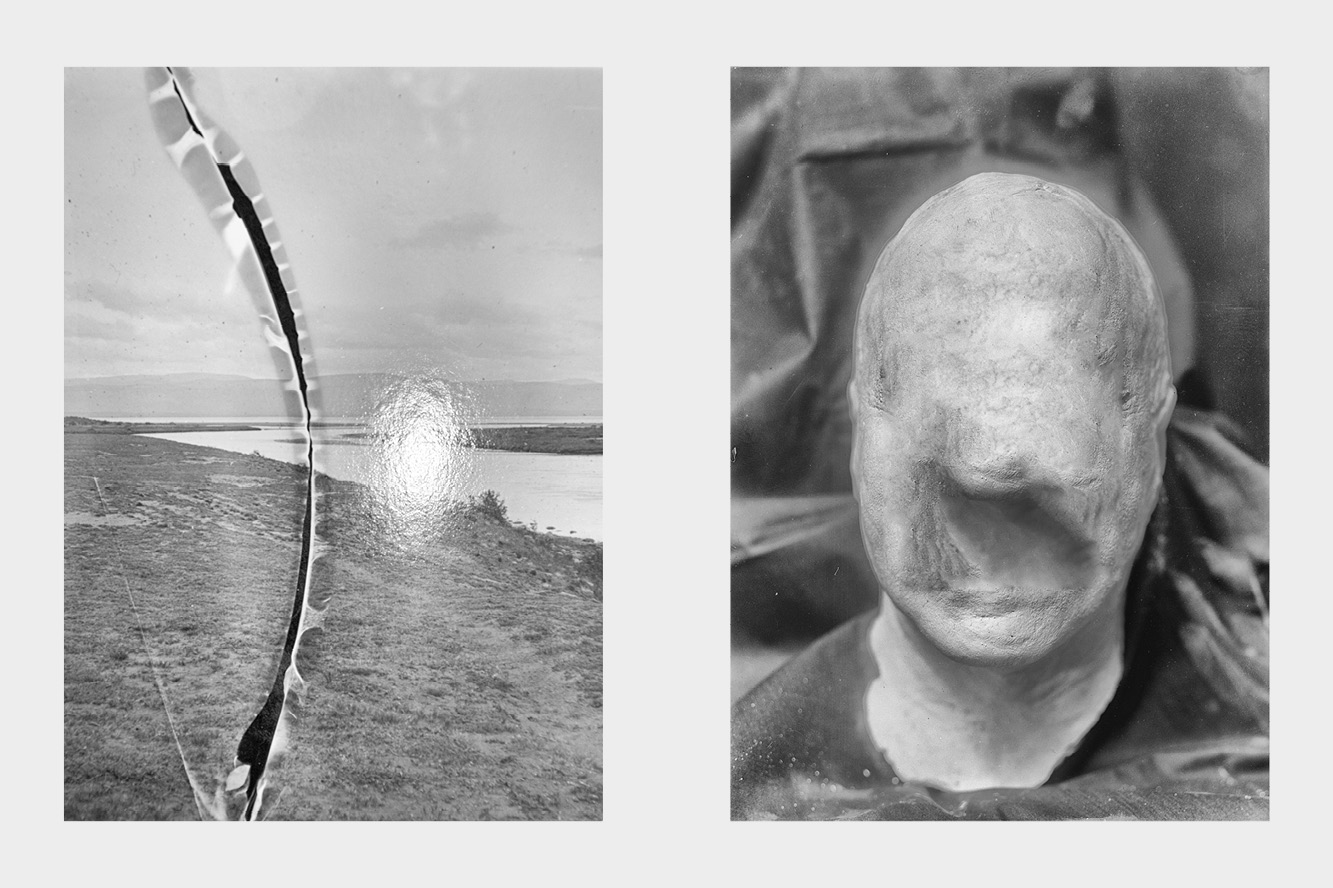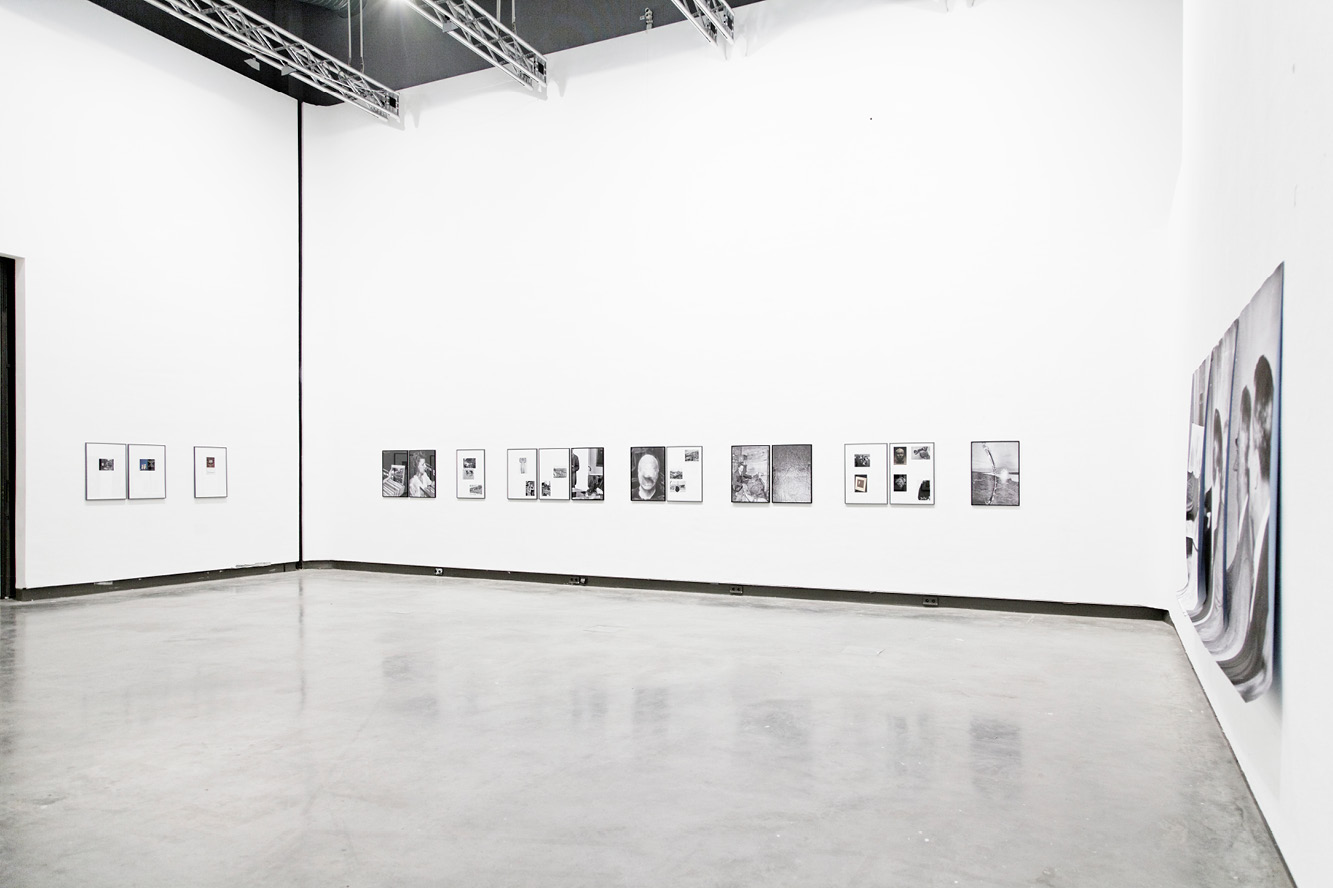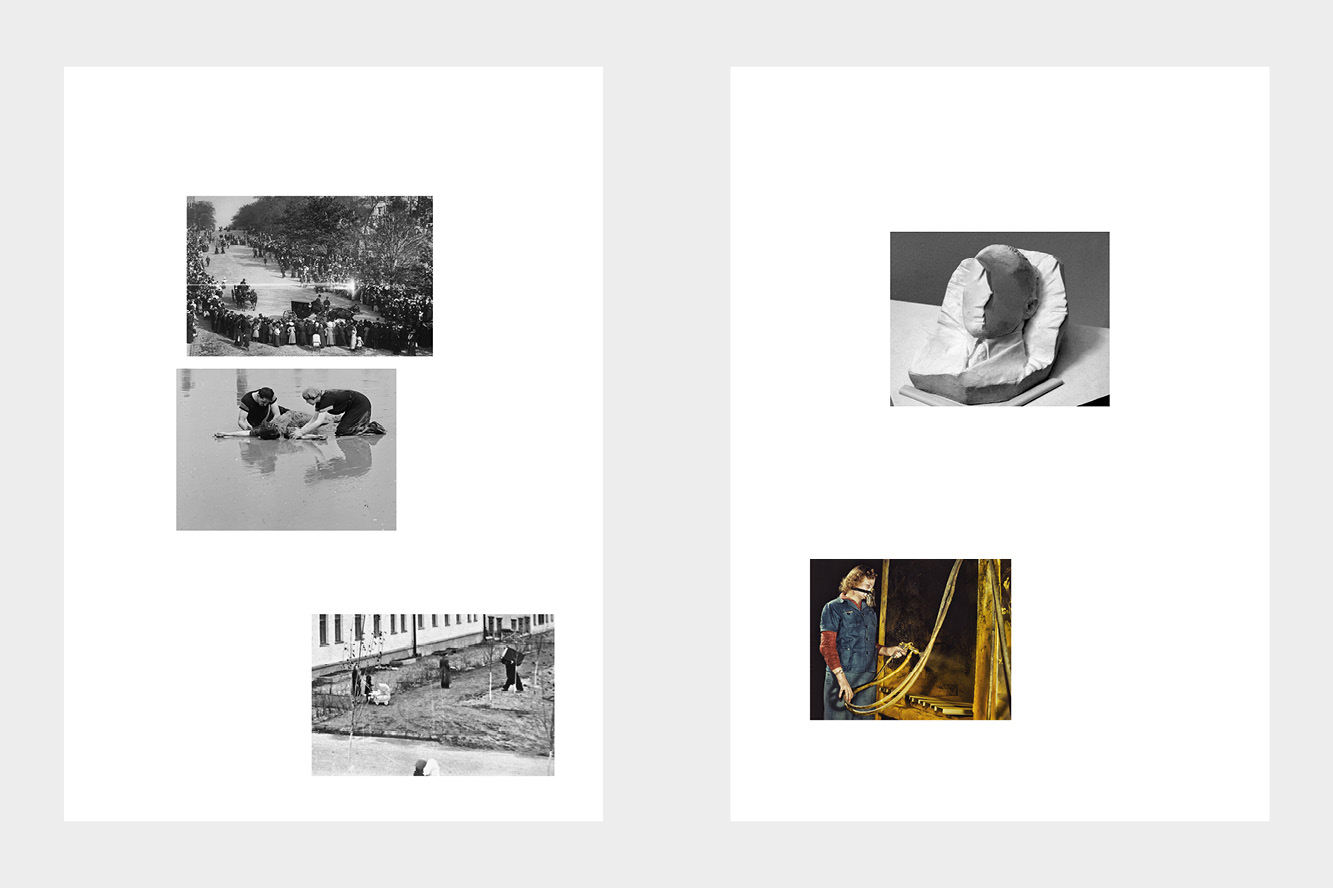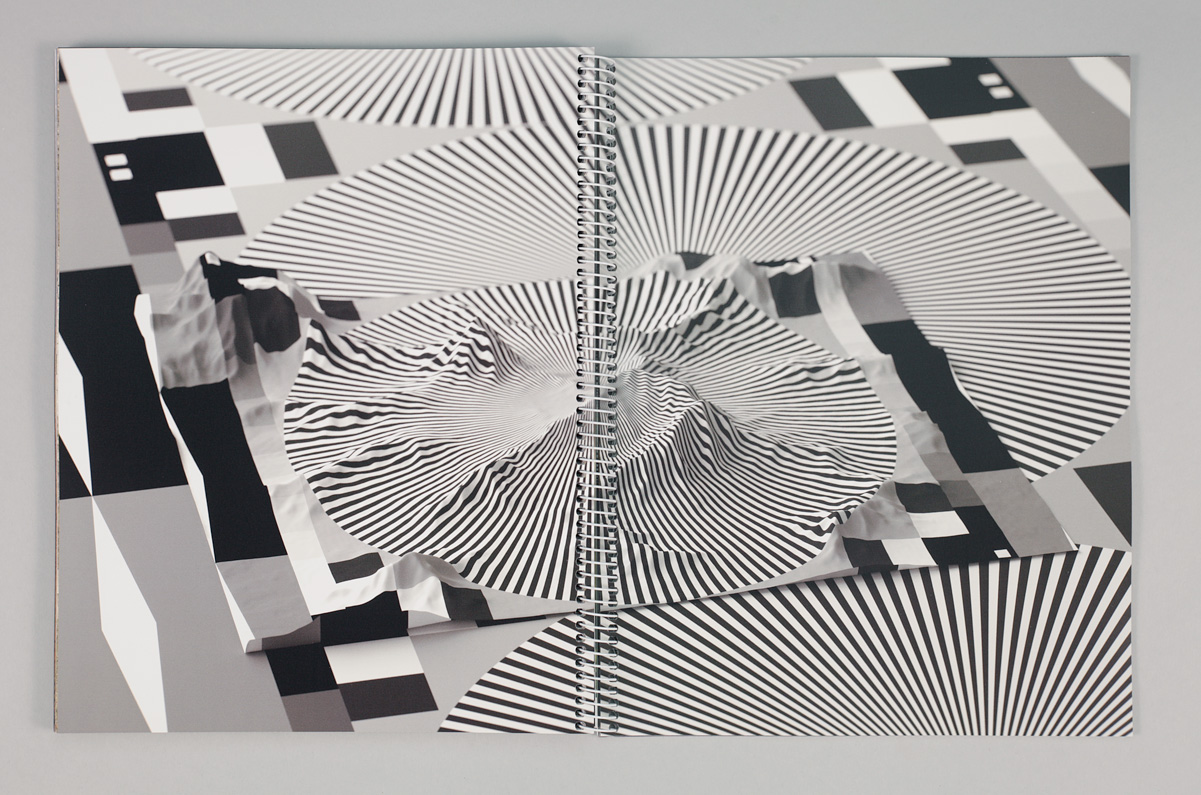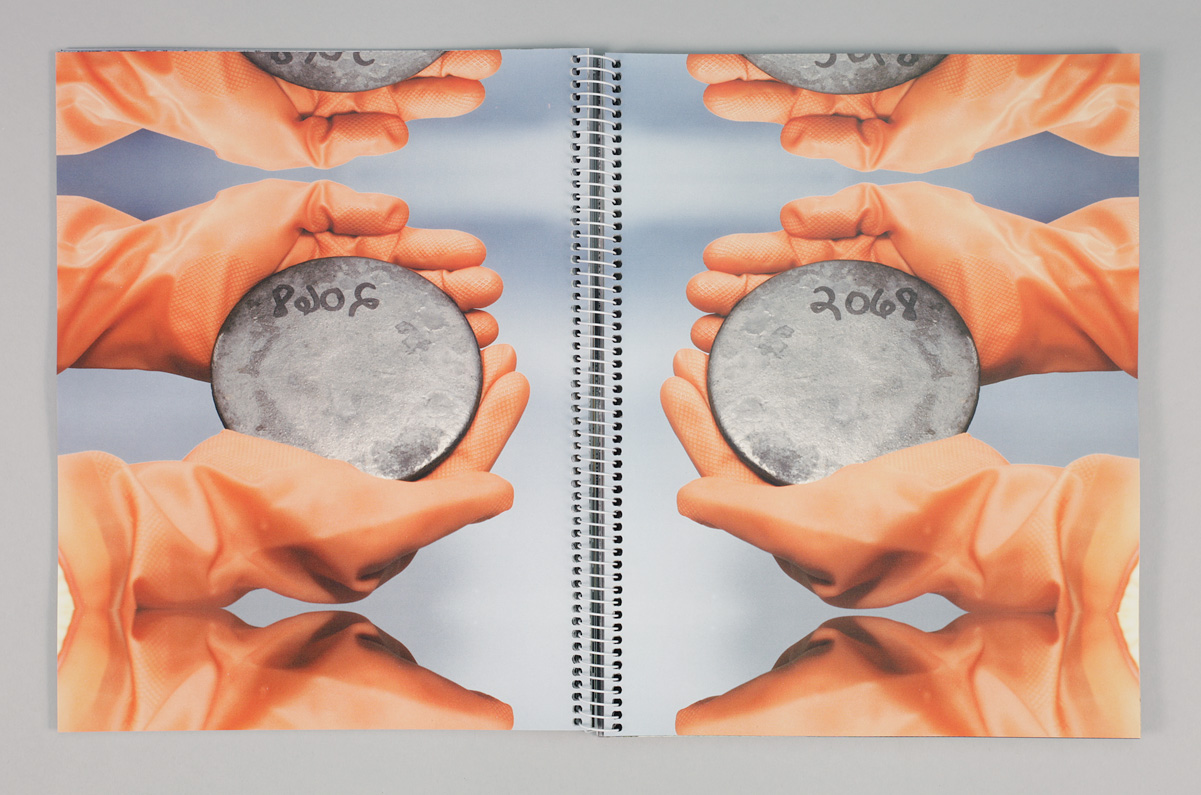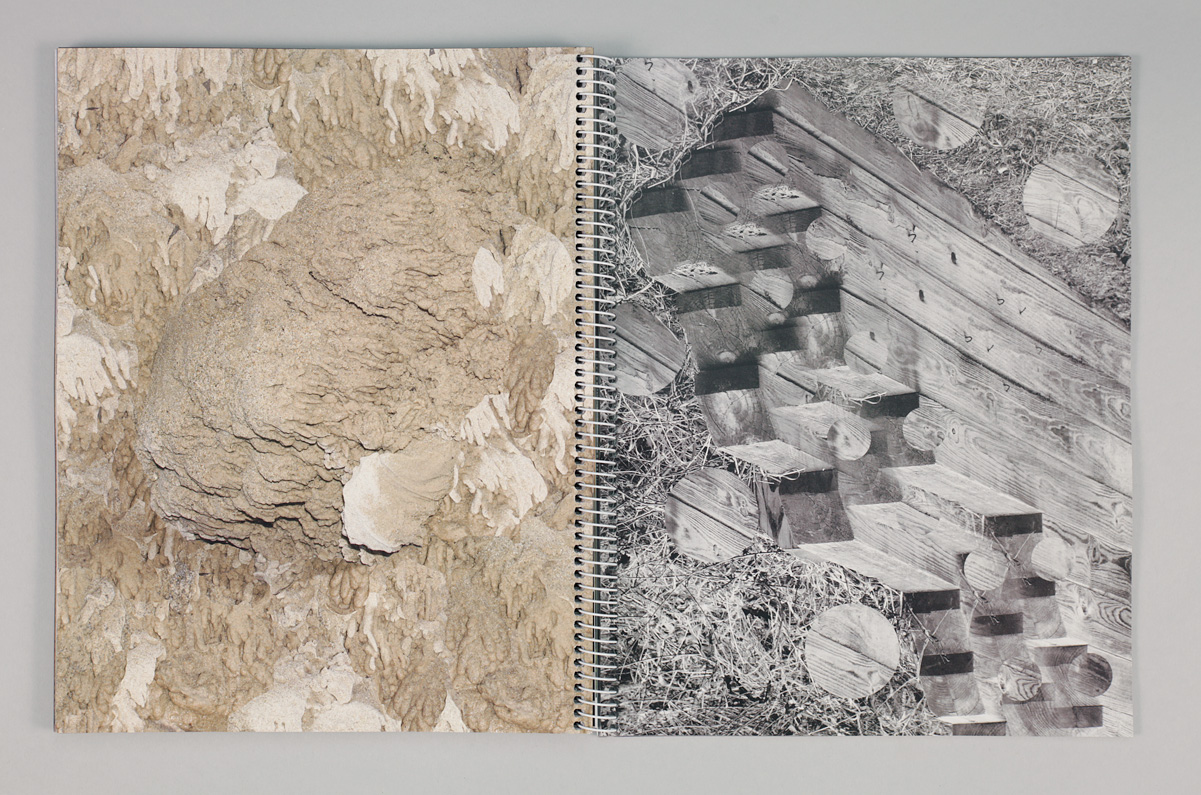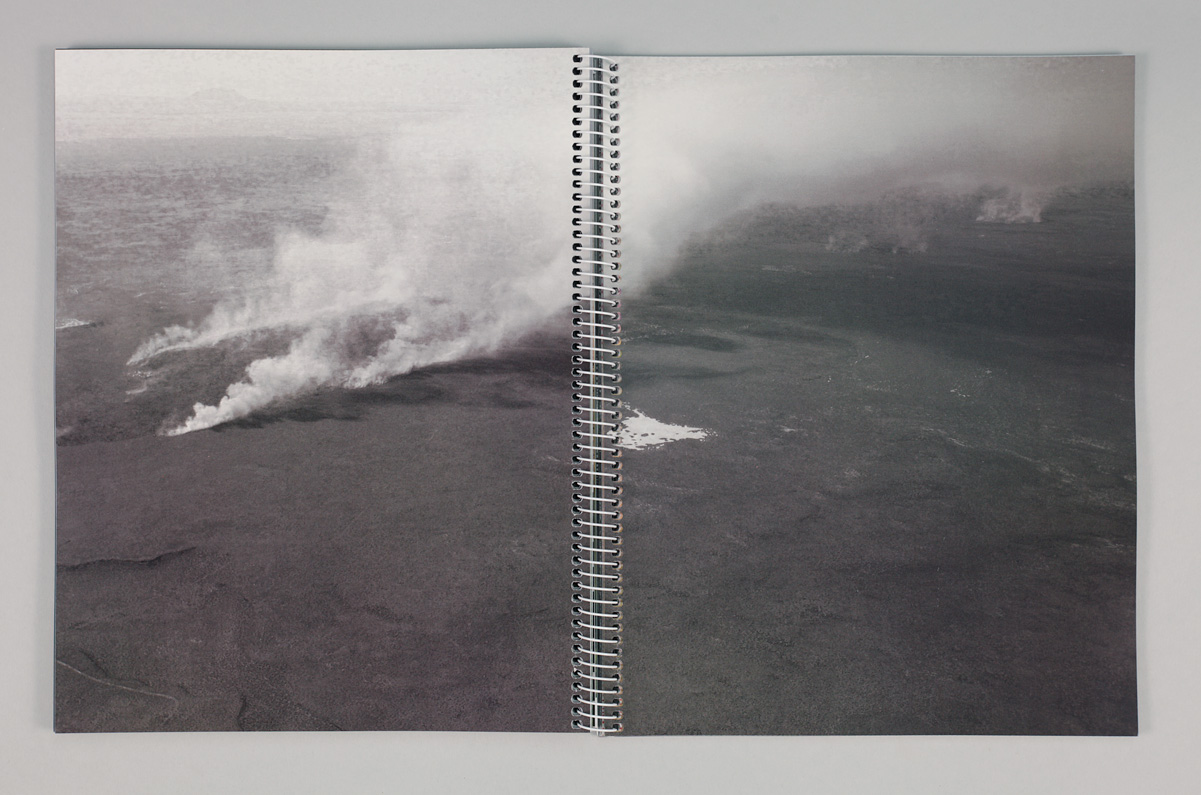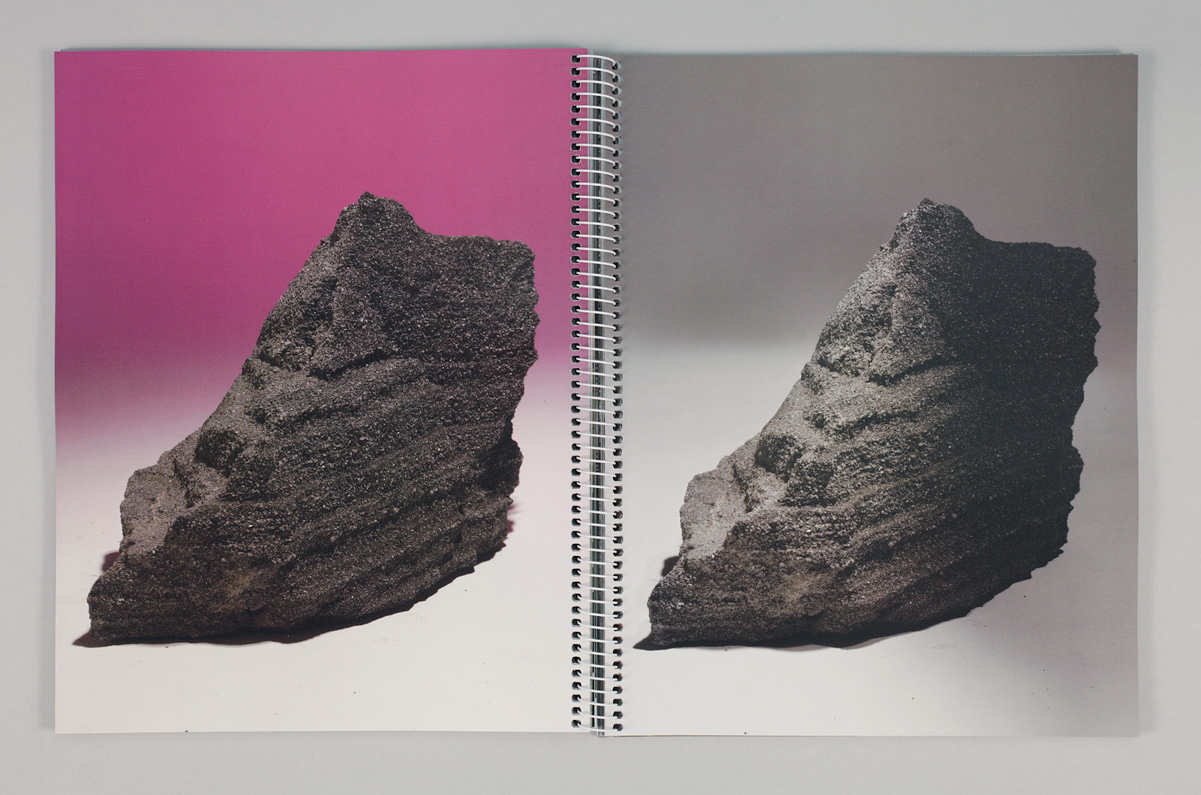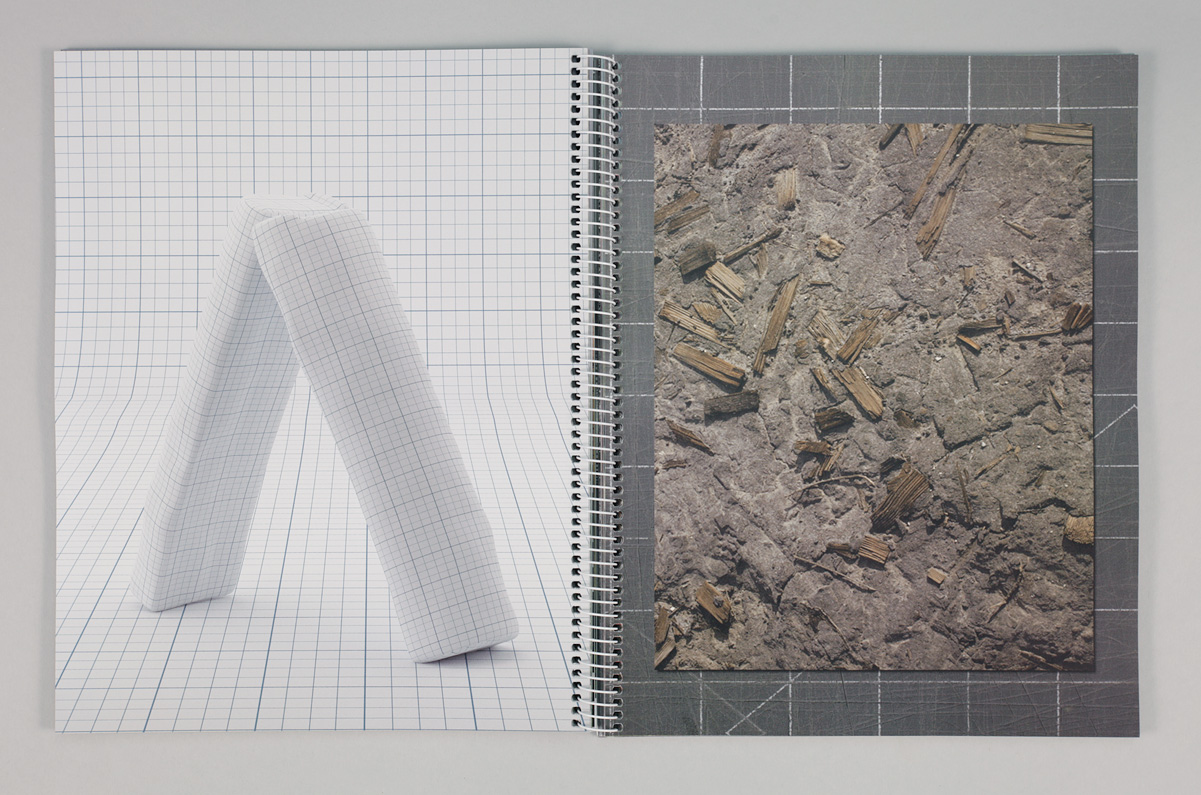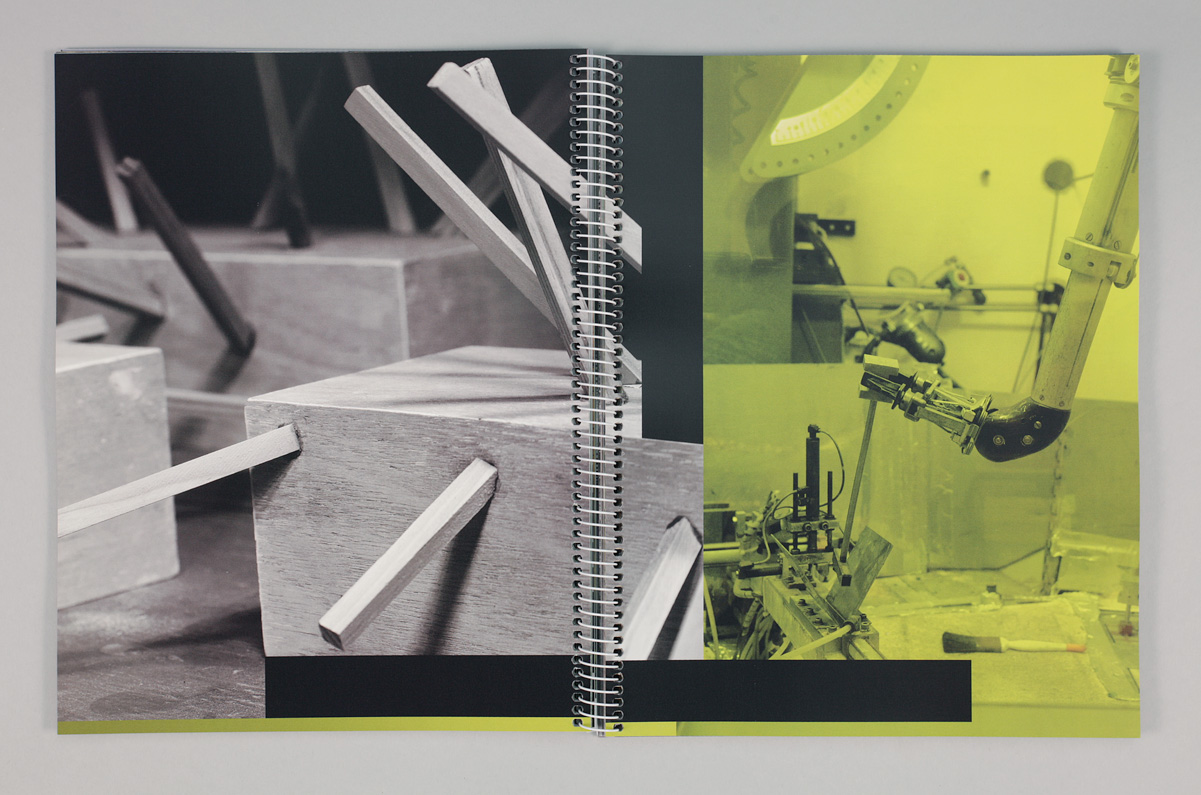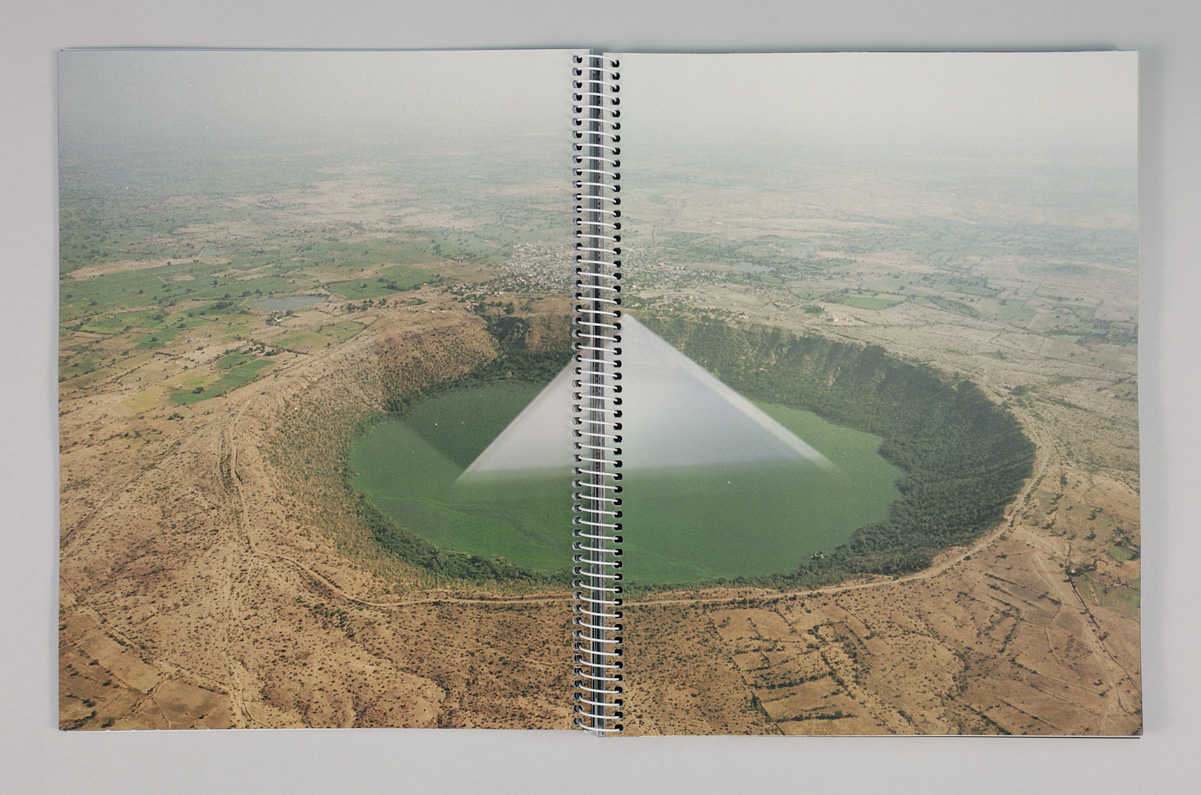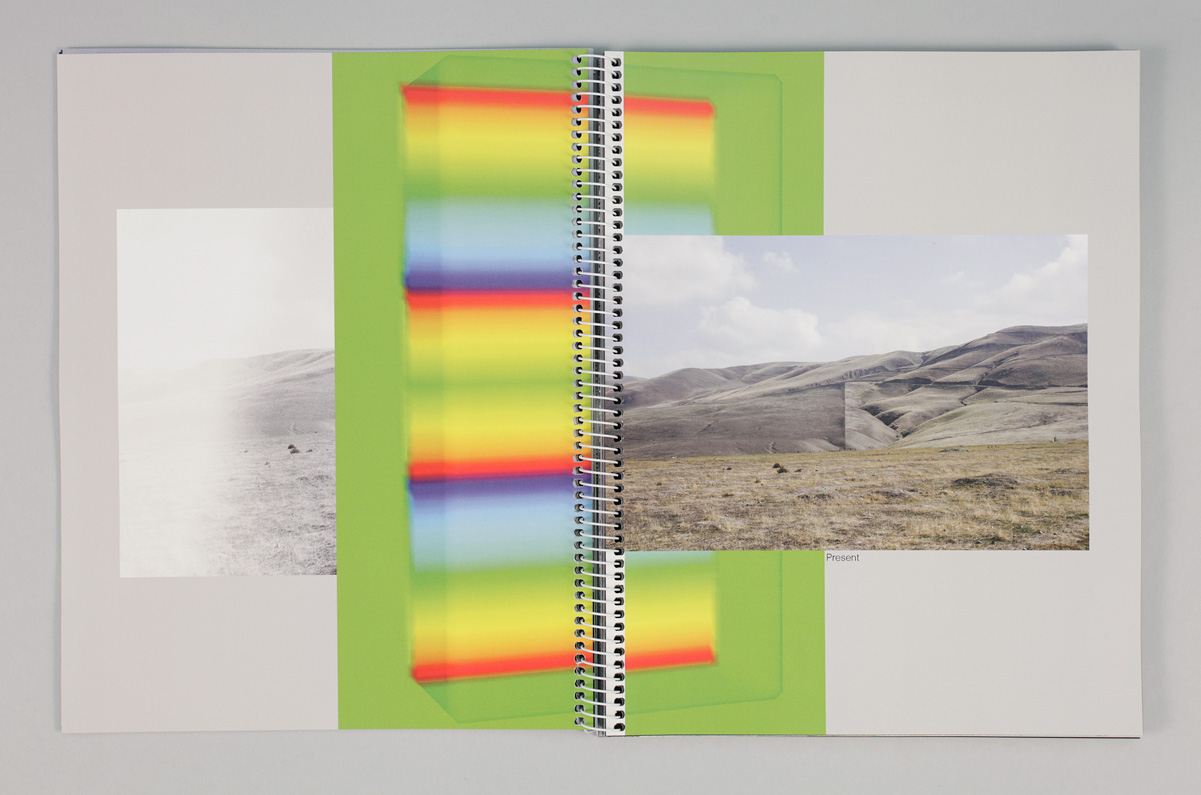Juno Calypso
Artist Feature
Every week an artist is featured whose single image was published by Der Greif. The Feature shows the image in the original context of the series.
Jeremy Haik - A Unique and Non-Repeatable Science
Jul 09, 2015
In this series of photographs, the words and images of science and history are my working materials. I arrange and photograph studio compositions that include images and text found in books from these fields. My focus is the visual and written language of systematized knowledge these books attempt to compile. The images in A Unique and Non-Repeatable Science consist of flattened collages of paper scraps that are then photographed in concert with multiple layers of transparent or translucent materials. Each image is the product of experimentation with washes of colored light, arrangements of printed material, and polaroids. Some images are manipulated digitally, but most remain as the camera saw them. The blending of chance and choice reflects my interest in the pliant nature of knowledge and historical narrative. By looking at small details and the physical characteristics of the book itself, the subtle influence these material qualities have on the message they hold becomes more visible. The container of a message, whether a book or a digital image, deeply influences how it is read and understood. In these images I am examining the influence of this container, whether text or image, on the meaning it holds. Photography’s presumed ability to produce perfect copies of itself is the characteristic that is most significant to me in my practice. The perfect copy underlies our systems of technology and communication and allows us to share and distribute images (and any other form of digitized information) instantly and easily. My words and images are combined with text and images that I find in the world, disrupting an otherwise perfect duplication. By combining these elements into new compositions, the possibility for alternative histories and latent meanings come to the surface.
Artist Blog
The blog of Der Greif is written entirely by the artists who have been invited to doing an Artist-Feature. Every week, we have a different author.
Michelle Leftheris – Woman’s Own Book of Houseplants
Jul 15, 2015 - Jeremy August Haik
Today I'm bringing you Woman’s Own Book of Houseplants, a recent project by NY artist Michelle Leftheris. In her part-photograph, part-collage images, she combines and flattens freshly harvested plant material with images taken from a 1969 book presumably published for housewives of the era. These images, made with the clarity of a flatbed scanner, vibrate somewhere between living material and artificial images, and between delicate softness and mechanical flatness. Taking cues from the Japanese Oshibana process of pressing flowers into illustrative images, Michelle extends this technique into the two-dimensional space of the scanner. Woman’s Own Book of Houseplants, like much of Michelle's work, contains a touch of wry humor folded into its smartly subversive performance. Here's Michelle describing her process of reclaiming and reanimating this subject matter: This series began when an old studio mate of mine left behind a book titled Woman’s Own Book of Houseplants from 1969. Written by the very authoritative looking William Davidson, it is features an abundance of plant photographs along with tips and instructions for care. My interest in the book was piqued both from and aesthetic and conceptual standpoint. Formally, the depiction of plants in the images were stiff and lifeless, one would have difficulty distinguishing if the plants were artificial or real. Conceptually, the title of the book, with all of its condescending charm, left me wondering what was it about this book that made it a woman’s own. Having decided that aside from being written in a simple, fairly non-scientific manner, the book is really quite general and I could make no strong connections between it and myself or any other woman I have known. I set out to make an improved version of this book – remaking the images in it with specific women I have known in mind. The act of invigorating these staid, largely black-and-white images is more than just a strongly conceptual exercise. There's a distinct and fundamental personal component for Michelle in the creation of this work, as she describes it: Each piece is named after a woman I have known throughout my life. Along with the name, I’ve also written a one sentence impression or memory I have of a woman with the same name. The act of naming these pieces transfers a sense of ownership to the viewer. Kind of like buying a keychain with your name on it in some town you visited on vacation when you were a kid. It’s a arbitrary act of ownership and identification yet we all delight in finding something that belongs to us. On the whole, Michelle's work demonstrates a similar focus on the material influence of photography: "I’m drawn to the ways that images function as on acting force on the physical world. All of my work focuses the exchange of objects and images in the way that they can become stand-ins for the corporeal and intangible." Michelle's website can be found here
Beau Torres
- Jeremy August Haik
I recently saw a performance Beau Torres gave in NY and thankfully it was well documented so I can bring it you here in this video. During this performance, Beau walks the audience through the pseudo-theory he's created called New New Photography (now in version 2.0) and during the performance he assembles a still life which he then photographs. His performance sits somewhere between theory and comedy; clichés from the language photo-theory abound in his transcript but are then transformed into jokes about their very cliché-ness. For me, Beau's performance was a smartly accurate (and funny) take on the conflicting pressures of academic language and intuitive expression facing students in art school: [vimeo video_id="133406538" width="746" height="420"] Here are a few of my favorite quotes from the performance: "The idea of an idea is only an idea and not really anything" "Between me and you, the Corinthian column is the only column. Doric and Ionic I just can't get behind. it took them a while but the third time's the charm right?" I asked Beau how performance functions in his work differently than other mediums. He said this: When working on this most recent performance I was considering disparate elements like: critique of graduate art education, instructional/tutorial videos, and my love of aesthetics, the beach, geometry, etc. With New New Photography 2.0 I could bring everything together nicely in a lecture that was humorous despite its didactic undertone. The stage presence of Bob Ross was the inspiration for the first episode of New New Photography whilst 2.0 drew more from Andrea Fraser's Museum Highlights. It was my hope that my delivery made the audience feel like they were in on the joke as opposed to being the butt of it (as some contemporary art is bound to do). Beau's work extends in multiple directions beyond performance; his current project is called Playing Atget. Here's what he has to say about it: The project I've been working on most recently is a series of photographs entitled Playing Atget. While working on my thesis collage videos I was introduced to the performance work of Stuart Sherman, and started to see my work as a mere rehash of something amazing made before my time. I feel there's something universal in this want/need to create something original, but often finding someone else has done it already, better than you ever will. From this perspective (and, frankly, a reason to get out of the studio and return to walking) I decided to take on a master street photographer head-on. While I was filming the collages I developed an interest in parallel planes and the impossible notion of bringing them together. Who better to imitate than Eugène Atget, whose window display pictures are a sophisticated play on straight photography's innate nature of flattening our three-dimensional world in the picture plane. In these photographs parallel planes touch; it's about what's in/on the glass. Beau's website (which Google thinks is in French...I find this funny) can be found here
Pacifico Silano
Jul 14, 2015 - Jeremy August Haik
Today I'm bringing you some new work from NY-based artist Pacifico Silano. Currently, he is an artist in residence at Baxter St (CCNY); these images are a sampling of the work he is currently preparing for his solo exhibition there later this year. Pacifico's work over the past several years has dealt with the photographic record of gay male identity. Throughout all of his work, which involves equal parts collection, appropriation, and careful observation, Pacifico presents us with a contemporary window into pockets of gay history defined in part by their absence from mainstream historical narratives. Pacifico has this to say about the relationship between history and photographs:
I think of the photographs that I make as a way of collaborating with the past, and I find value in reclaiming what has been lost and preserving what may soon be. Tearing pages, obscuring surfaces and juxtaposing artifacts are just some of the many ways my work makes interventions with small parts of history.
Pacifico's exploration of this topic has moved fluidly between various historical eras, from Germany in the 1930s to an American porn star in the 1970s but recently he has been returning to a specific historical period that has been present in his work for several years, post-Stonewall 70s and early 80s at the onset of the AIDS epidemic. Here's what he has to say:
For the past five years I have focused on creating conceptually based imagery that delves into the culture of gay identity after the Stonewall riots. I’m specifically interested in the years from 1969 to 1983, when AIDS was first written about as a “gay disease."
The process of making these images has evolved over the years. While I’ve been working with the scale of a photograph, video sculpture and appropriation, in the last year my work has gone through a dramatic transformation. Instead of cramming content into the frame, I find myself removing elements until I am left with the bare minimum. My approach to making an image has become more archive based, as I play with form, color and the content of gay imagery from old magazines and snapshots. I’m interested in these small, fragmented parts of a history that can easily be disposed of -- I’ve collected mementos of the time such as matchbooks from a leather bar and soap from a shuttered bath house, studying them like an anthropologist would.
Pacifico's website can be found here
Eclipses, Phases, Transits and Occultations
Jul 13, 2015 - Jeremy August Haik
Before photography, we had ancient constellations. These celestial abstractions of myth and folklore gave way to the scientific obervation and study of the solar system, and ultimately far-flung galaxies and exoplanets. It should be no surprise the celestial bodies have long been a muse for photographers (among other artists). I've written briefly about the essay Total Eclipse in Annie Dillard's Teaching a Stone to Talk previously in this blog post , and I thought today I'd expand on the idea with some of my favorite photographic images (and one of my own) that come to mind when reading it. Here's the passage: You have seen photographs of the sun taken during a total eclipse. The corona fills the print. All of those photographs were taken through telescopes. The lenses of telescopes and cameras can no more cover the breadth and scale of the visual array than language can cover the breadth and simultaneity of internal experience. Lenses enlarge the sight, omit its context, and make of it a pretty and sensible picture, like something on a Christmas card. I assure you, if you send any shepherds a Christmas card on which is printed a three-by-three photograph of the angel of the Lord, the glory of the Lord, and a multitude of the heavenly host, they will not be sore afraid. More fearsome things can come in envelopes. More moving photographs than those of the sun’s corona can appear in magazines. But I pray you will never see anything more awful in the sky. You see the wide world swaddled in darkness; you see a vast breadth of hilly land, and an enormous, distant, blackened valley; you see towns’ lights, a river’s path, and blurred portions of your hat and scarf; you see your husband’s face looking like an early black-and-white film; and you see a sprawl of black sky and blue sky together, with unfamiliar stars in it, some barely visible bands of cloud, and over there, a small white ring. The ring is as small as one goose in a flock of migrating geese – if you happen to notice a flock of migrating geese. It is one 360th part of the visible sky. The sun we see is less than half the diameter of a dime held at arm’s length. - Annie Dillard excerpted from Total Eclipse in Teaching a Stone to Talk And here are a couple videos that came to mind in thinking about this passage as well: Walid Ra'ad and the Atlas Group - I only wish that I could weep [embed]https://youtu.be/ZJbyxRXkP4M[/embed] Simon Starling's Black Drop traces the history of recording the transit of Venus across the sun. His video was made in 2012 during the last such transit. Venus will not complete another trasit until 2117. [vimeo video_id="67220997" width="746" height="420"] Peter Coffin - 4 color eclipse [vimeo video_id="86652043" width="746" height="420"] William Lamson - A Line Describing the Sun [vimeo video_id="21481196" width="746" height="420"] [And since I can't embed it here's a great video by Semiconductor]
Falk Messerschmidt – Phainesthai
Jul 12, 2015 - Jeremy August Haik
Today I'm bringing you a project by German artist Falk Messerschmidt. I've written about Falk's work previously in Conveyor #6 (PDF) and I'm continually drawn back to his work. Any successful act of appropriation is an act of transformation (that's what the courts in the US generally say, at least) And while there is no shortage of artists working with appropriated imagery and historical narrative (myself included), what sets Falk apart for me is the way he transforms the historical meaning of his images through his careful selection and arrangement of images coupled with a clever use of language, both written and spoken. Here's what Falk has to say about his practice as a whole:
Phantoms are "something which one can‘t forget but which at the same time is impossible to be recognized“ writes George Didi-Huberman in The Afterlife of Images. In my work phainesthai [φαίνεσθαι; old greek: to imagine something, to appear, to seem and to give a show] I interrogate the phantom characteristics of photography which I find to be revealed in the fractures of its materiality. These fractures in turn give evidence of one of photographies most distinguishing qualities: that it touches upon the real. Meaning is happening primarily when the inclined spectator allows himself to "read was never has been written“.I’m generally interested in archives, image-text relations, narratives and the photographic matter. My method can best be described in drawing feedback loops and non-linear connections as well as creating or pointing on the ambiguities between and within these respective fields. I’m fascinated by the incoherence and inconsistency of what is there and how we name and see it. The serendipitous findings when doing excessive research on a current body of work are regularly the welcome foundations of new ones.
The images above are from his latest project Phainesthai which, like many of his projects, comprises multiple interlinking components. I asked Falk to give me a few words on this latest project:
Phainesthai consists of three parts: The first part of the work, Index, serves as a prologue. The second is L, a fictitious diary which is based on texts of photographic theory and mainly, yet loosely based on the life and writings of the Russian psychologist Lev Semyonovich Vygotsky. For the third part I have gathered photographic material from various archives including my personal one and recombined, edited and recontextualized it in 40 Plates & Panels.
And here's an excerpt from the fictional diary
June 12, 1934 Yesterday L died. He was my twin brother, though he did not know me or did not want to know me. At least I suspect he didn’t. He knew of my existence. Of that I might be certain. But you don‘t look over your shoulder each day to check if your shadow is still there. It‘s just understood that it is behind you, when the light comes from the front. Only on really dark days is he absent. As L is now. I remained. Maybe on bright days people disappear, on the dark ones their shadows. His eyes had always been fixed upon me so intensely. As if he wanted to keep hold of an image. And yet I‘m the dark one of us and not unlike him. Some even say that we‘re similar. Only much more relaxed in the eye area. [...] October 12, 1935 Walked in the park. On the way home I watched some children as they were playing a strange game. They looked each other straight in the eye and remained petrified for several minutes - as if someone had stopped time and than if one moved, he dropped out and had to turn his face to a tree. Unbidden this memory came to me: Sometimes L stared at me for a while and with peculiar intensity. I usually danced around then and avoided his gaze, but that did not impress him. I‘m probably not what you would call a visual person. [...] October 14, 1935 Finally dared the first experiment with the apparatus. It has a remote control. So it is easy to make a self-portrait with it. Sank to my knees in front of the black eye of the camera and pressed the trigger. Suddenly the sun pierced through the cloudy curtain and flashed in my eye. The negative, which I developed in the evening, was of excellent blackness. You could not see anything in it. From Ls diary I feel like a man who climbs the dark stairs of a medieval tower. It‘s been a while since I‘ve looked out the window and reassured myself whether I‘m getting somewhere or if the outside world still exists. ––– Falk's website can be found hereDeliberate Operations #3 // Everything Is Collective
Jul 10, 2015 - Jeremy August Haik
From the Everything is Collective website: DELIBERATE OPERATIONS reflects the EIC's view of how it conducts considered and sustained operations in space and sets the foundation for developing other fundamentals, tactics, techniques, and procedures. These operations are designed and/or spontaneously realized to reveal or conceal certain features of the environment. Evidence of these operations may be presented as photographs, texts, publications, exhibitions, meetings and rendezvous. However, these manifestations are only temporary. They should be regarded as always in flux, providing an ever-shifting framework of ideas and actions upon which to build the provisional and tenuous responses necessary to engage the larger issues of impermanence and amorphousness in contemporary life. DELIBERATE OPERATIONS can be thought of as a ghost structure erected in the gaps between conventional knowledge and abstract thought. This structure, which reveals the true shape of these conventions, as well as the potential for their negation, is of greater interest to us than any of the specific subjects addressed here in. For these records to mean anything, they must come alive in classrooms, homes, workplaces, public spaces and daily practice. Learn from them, adhere to them, and continue to help us adapt them to the complex and competitive environments in which we operate. Victory starts here! Everything Is Collective (E.I.C.) is an ongoing collaboration between three artists: Jason Lukas, Zach Norman, and Aaron Hegert. Since 2013 the group has worked together on numerous exhibitions, publications, and web-based projects, all of which address contemporary issues in photography and image making. Our practice is truly collaborative, and all the works we create are attributed to the group as a whole. Because of the special nature of this collaboration, our projects do not conform to the traditional structures that photographic work often fits into, nor can our concepts be easily explained by a simple thematic text. We treat our collaboration as a microcosm, a space where the most contentious and exciting subjects in contemporary photography, art, and culture at large can be stripped away from the Grand Narratives to which they have been assigned, and be explored in a more intentional, devious, and uncompromising way. Everything Is Collective is: Jason Lukas Zachary Norman Aaron Hegert Everything Is Collective


